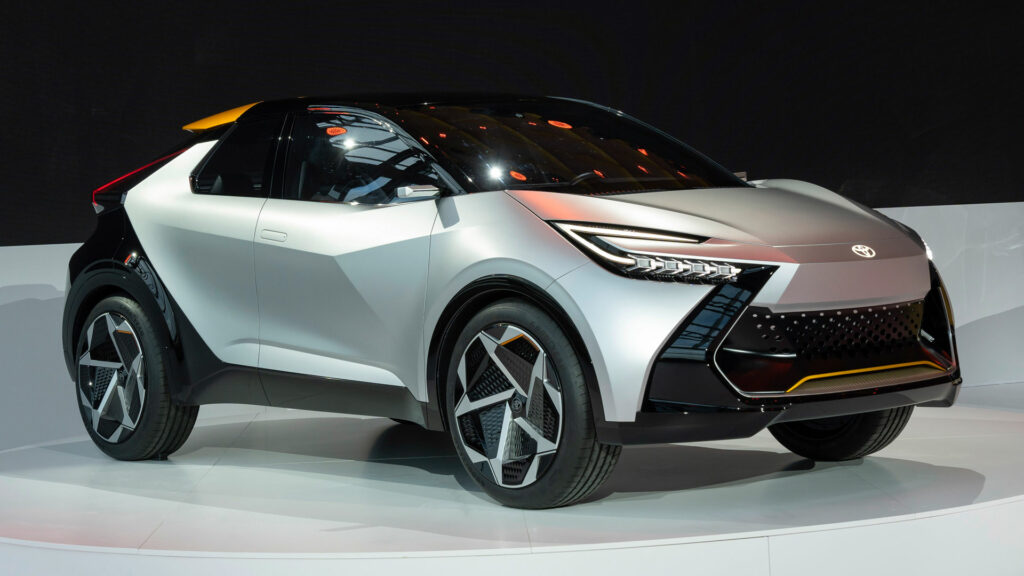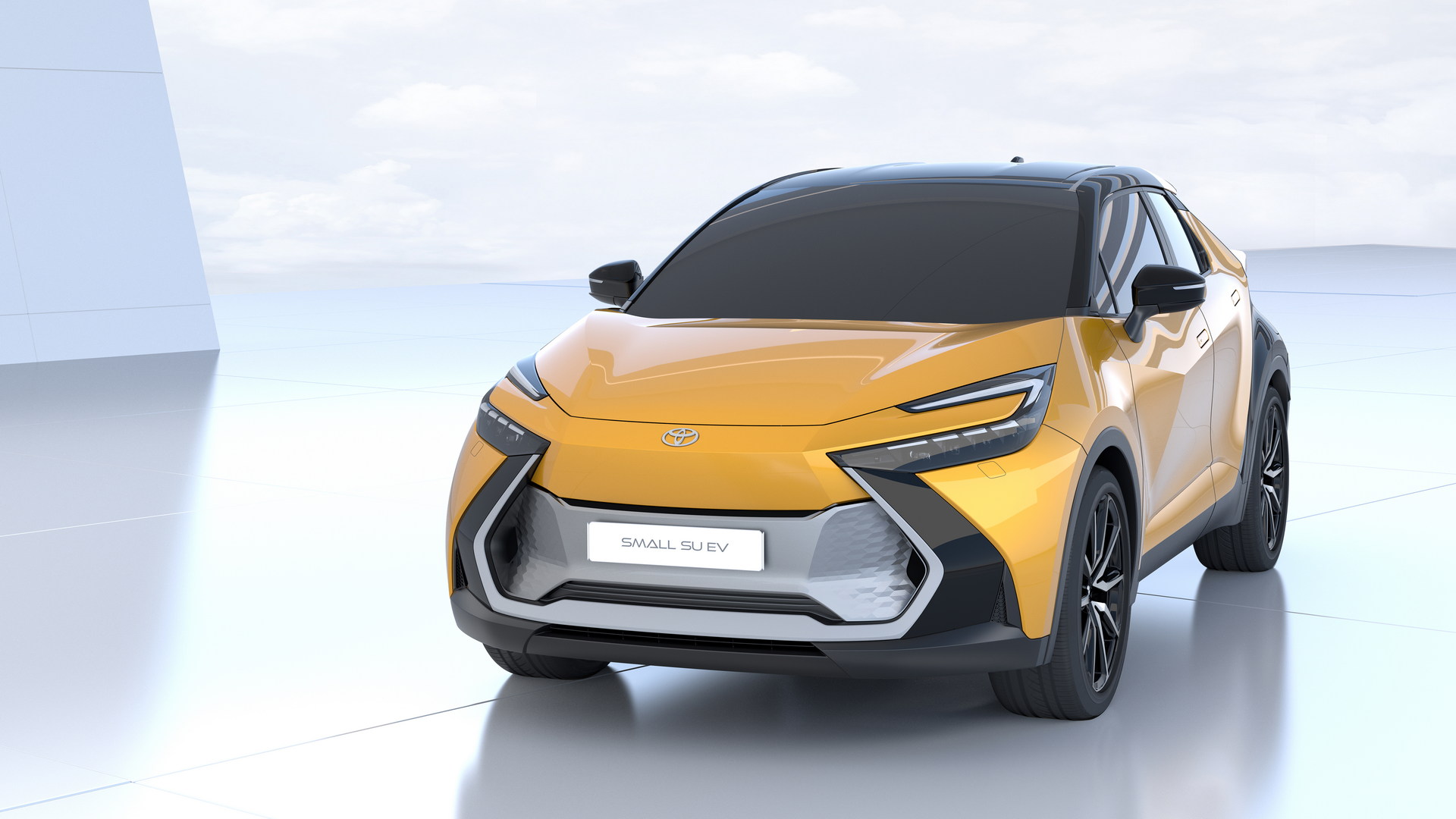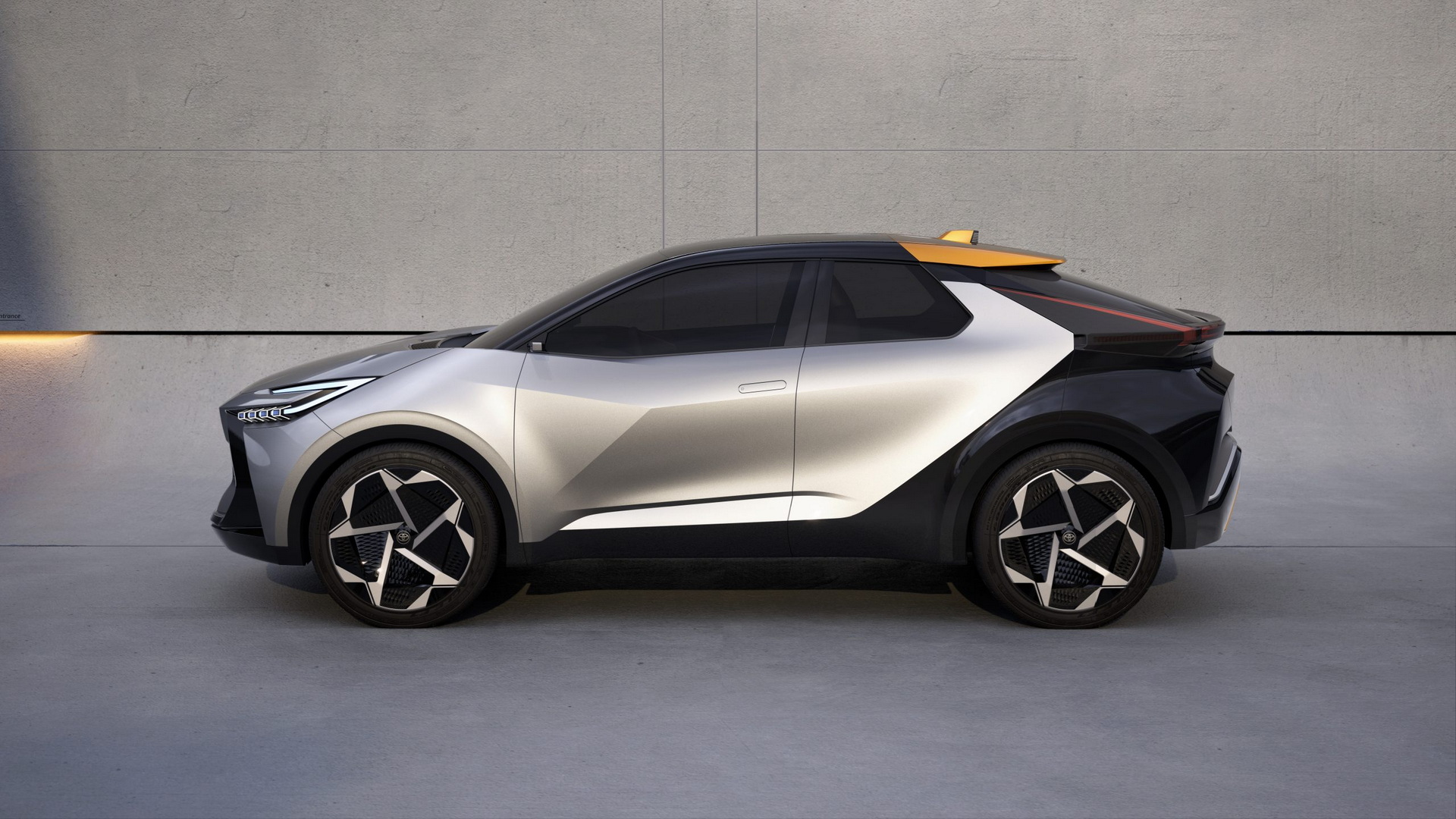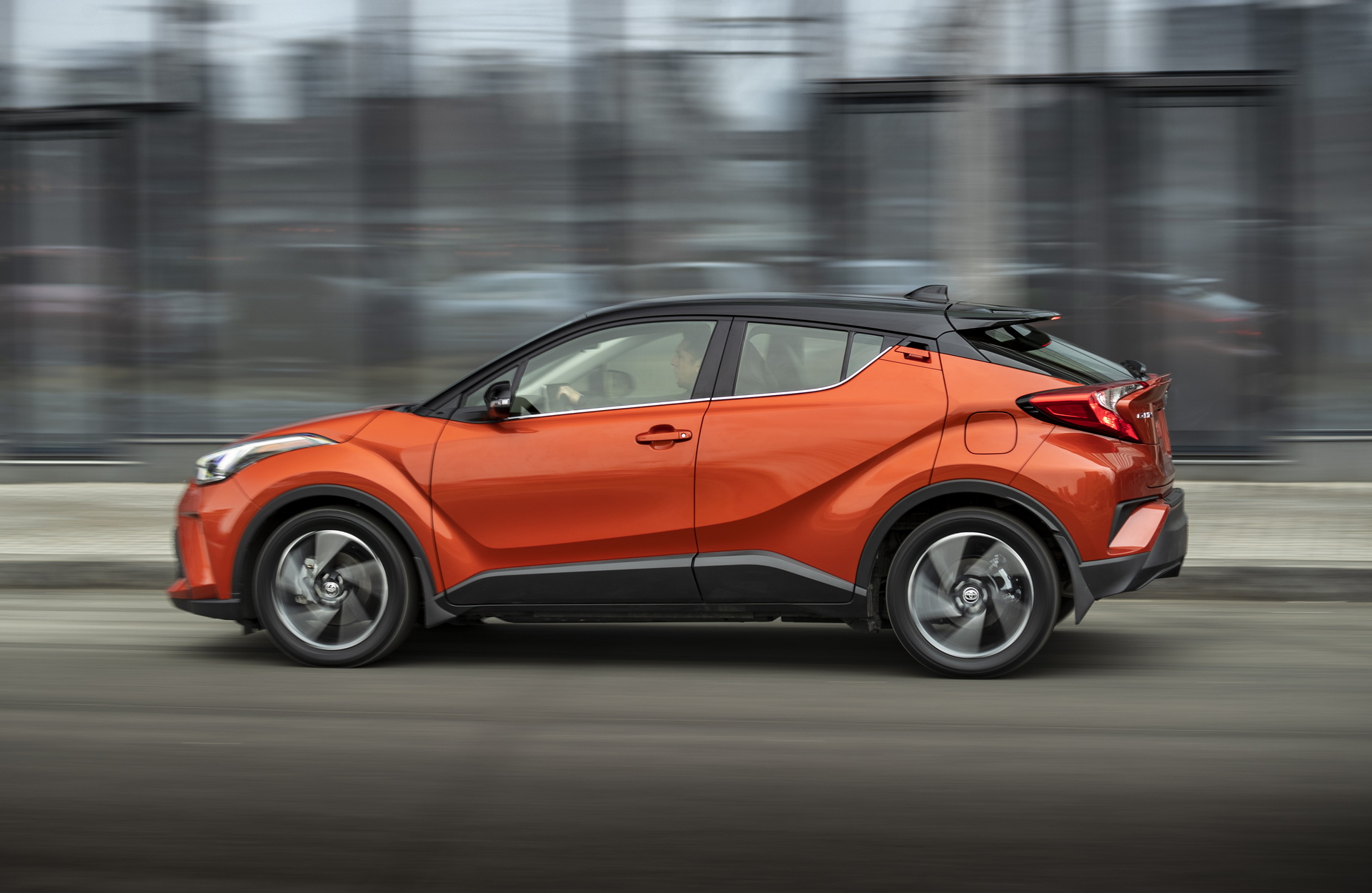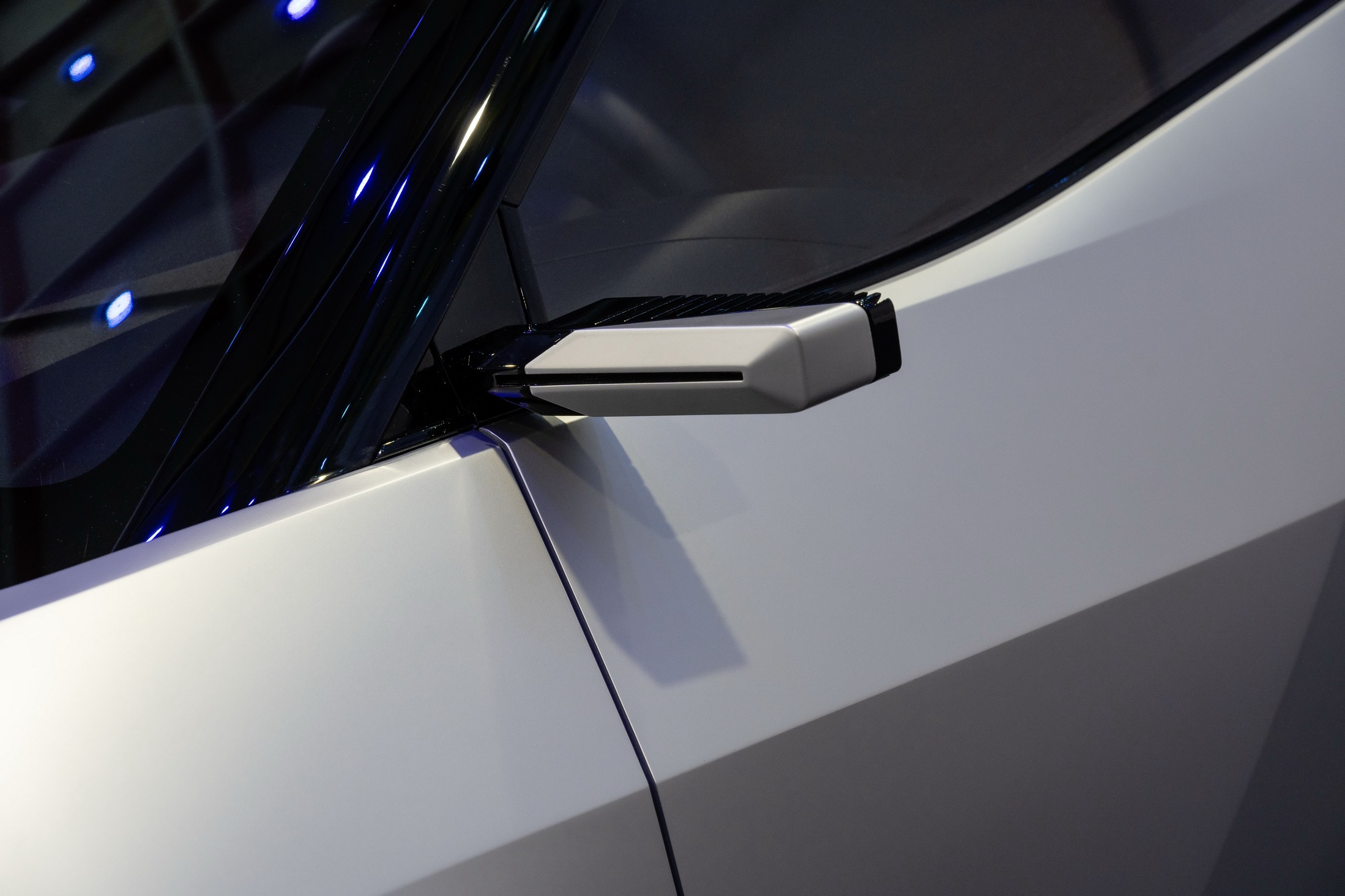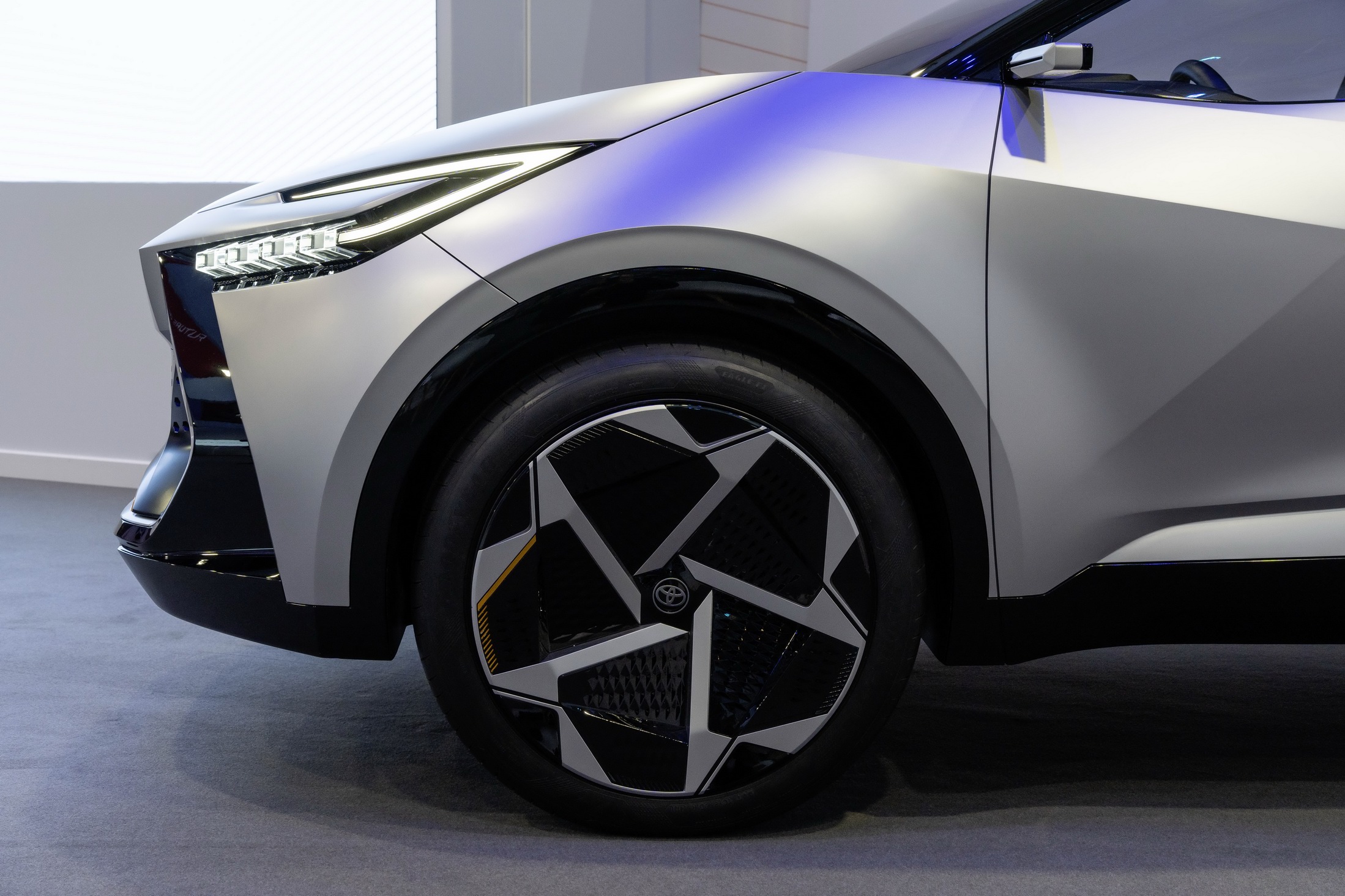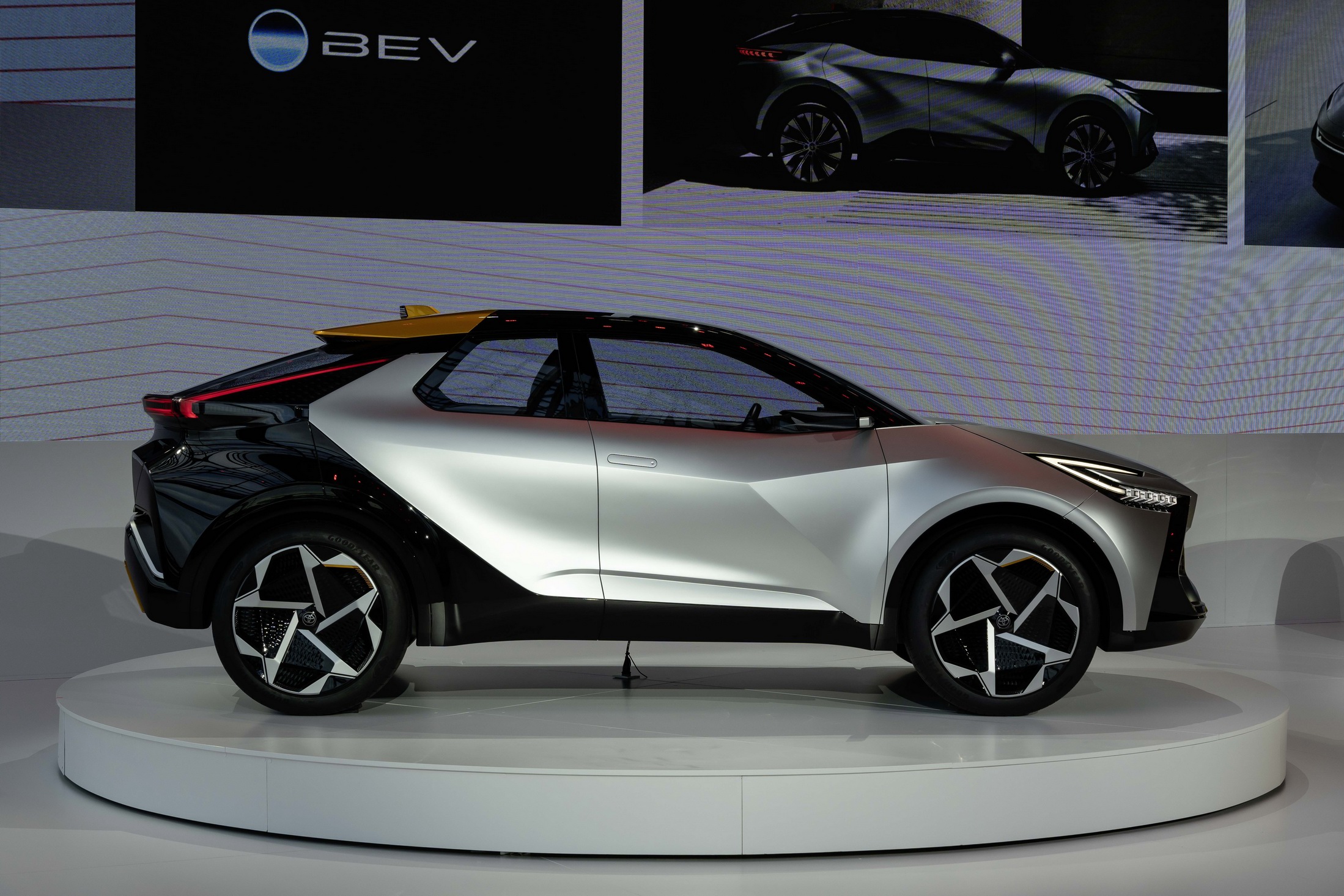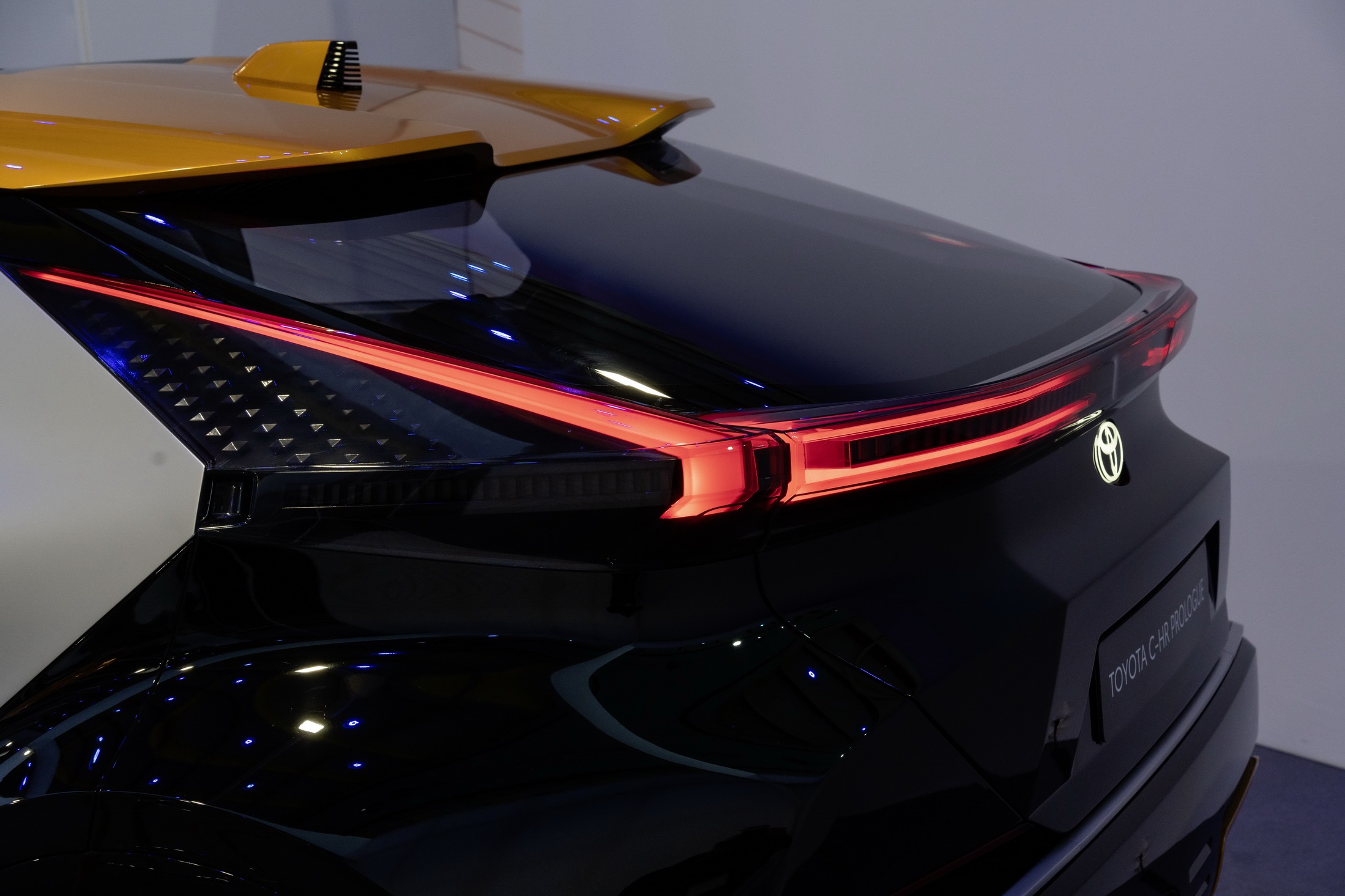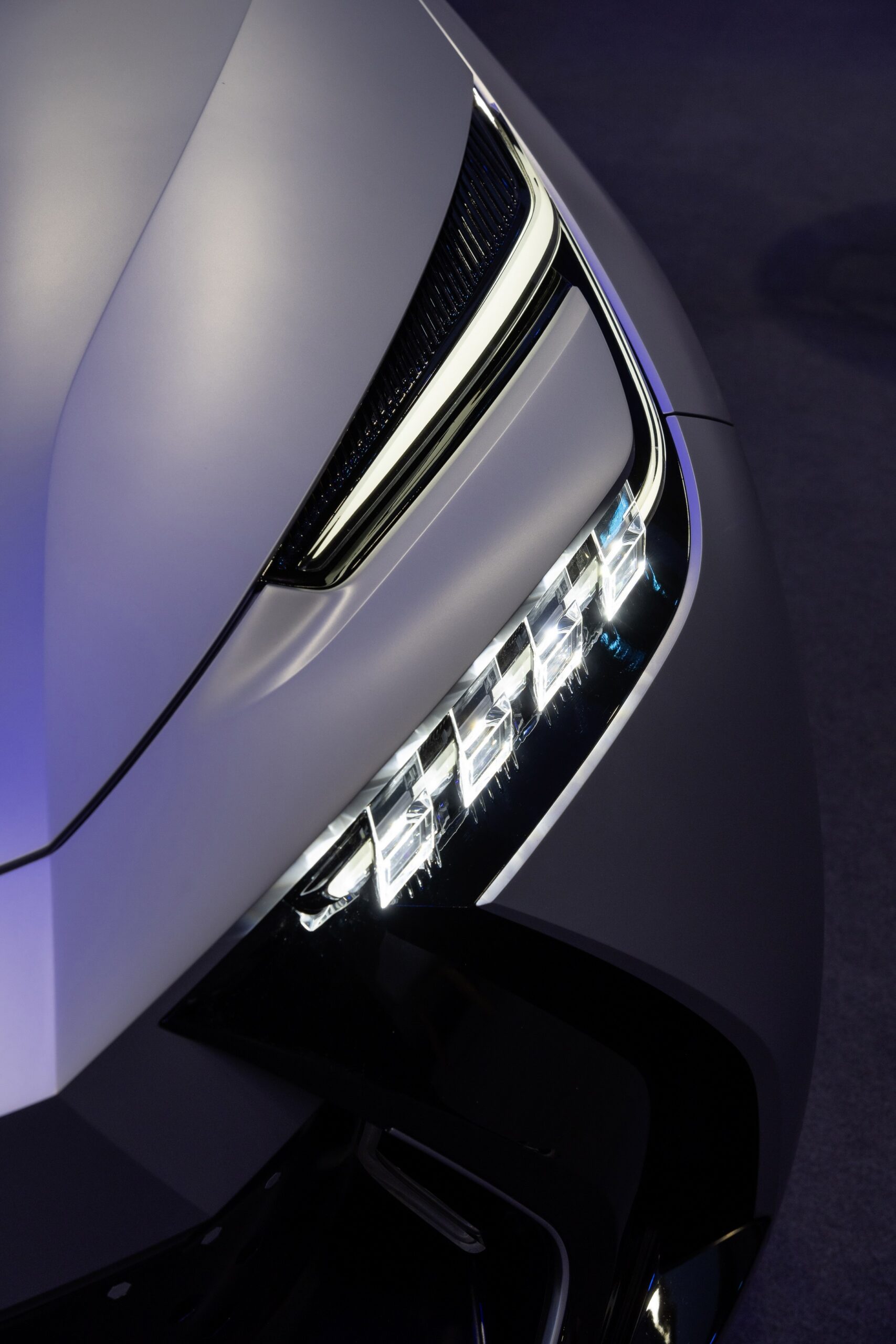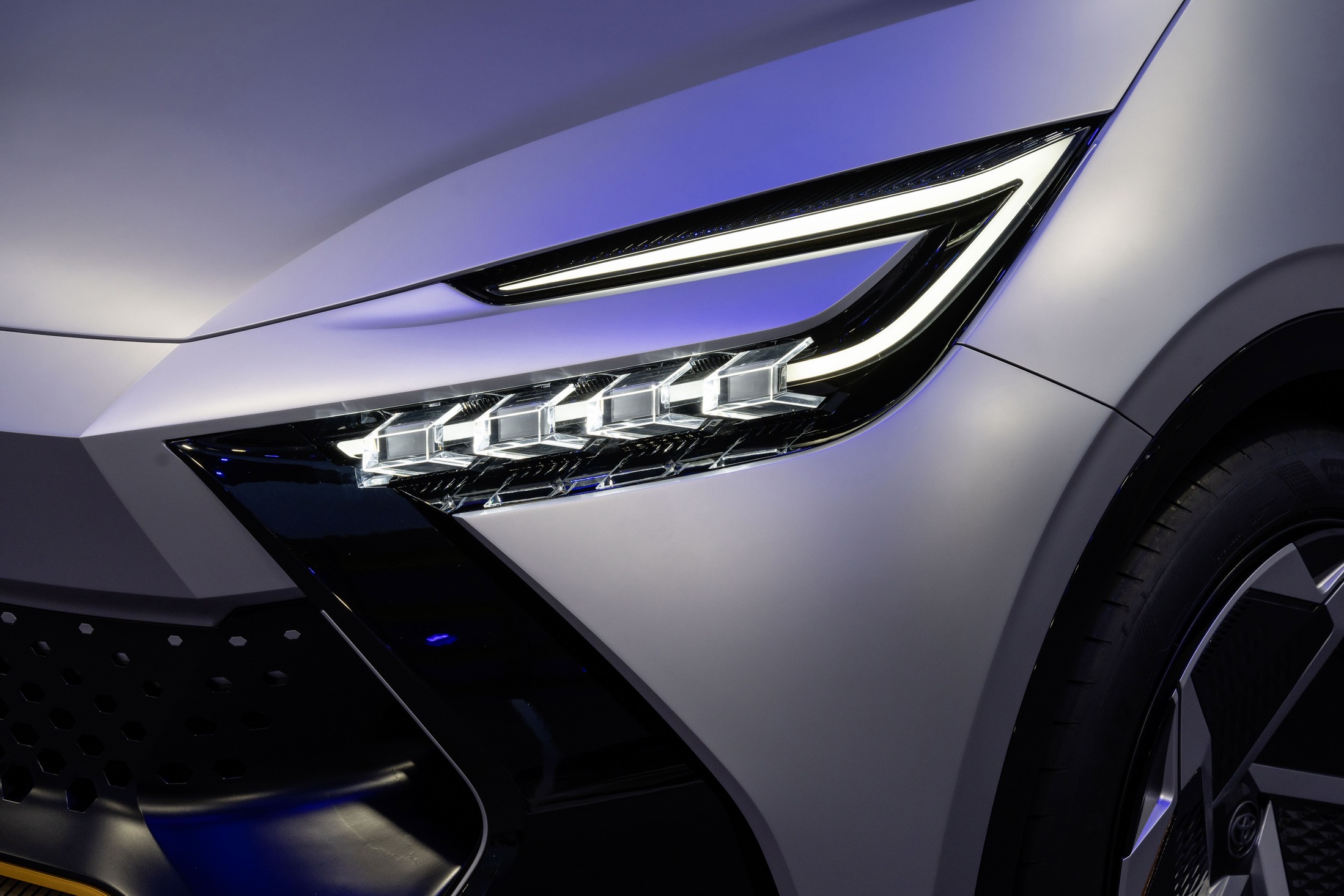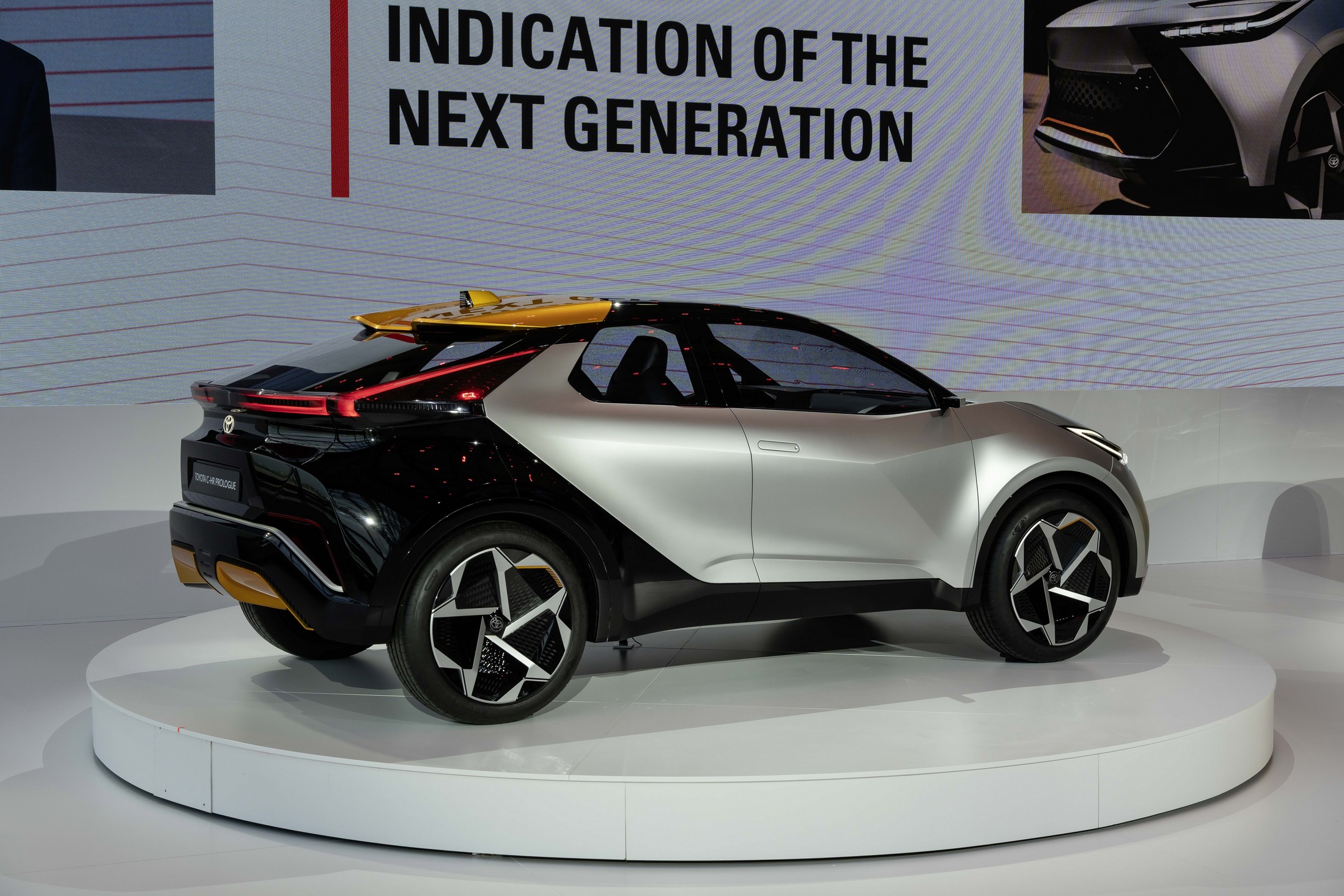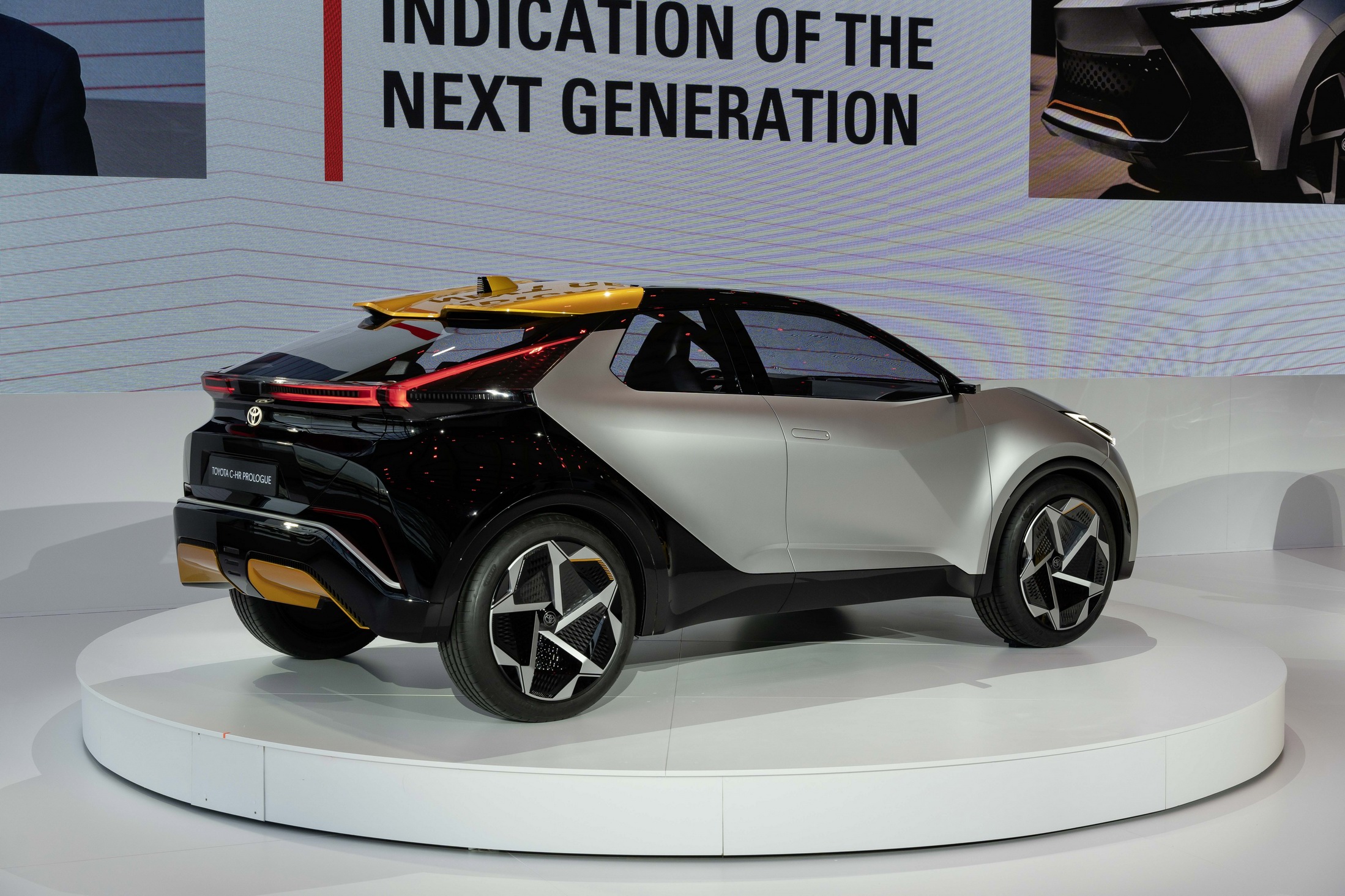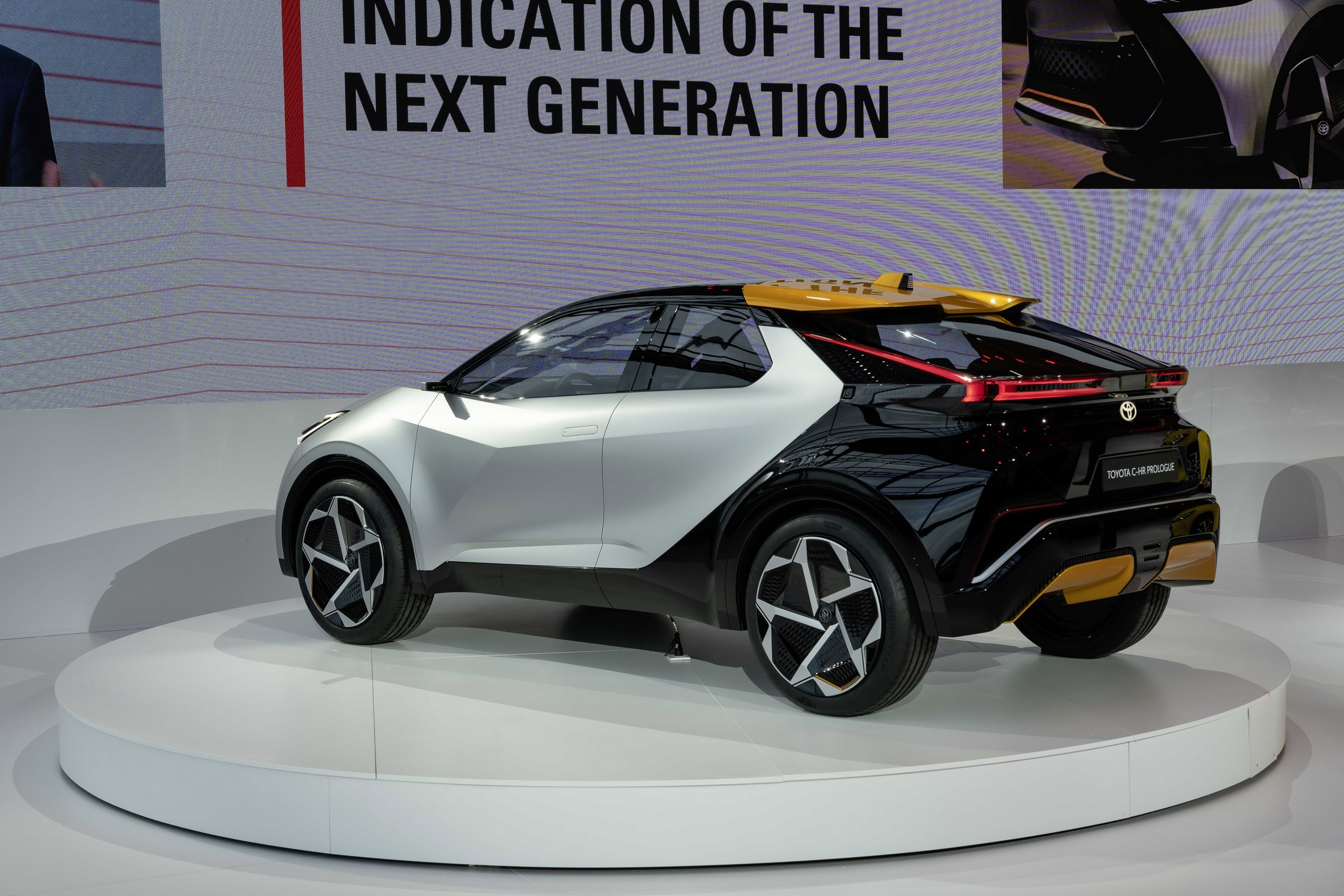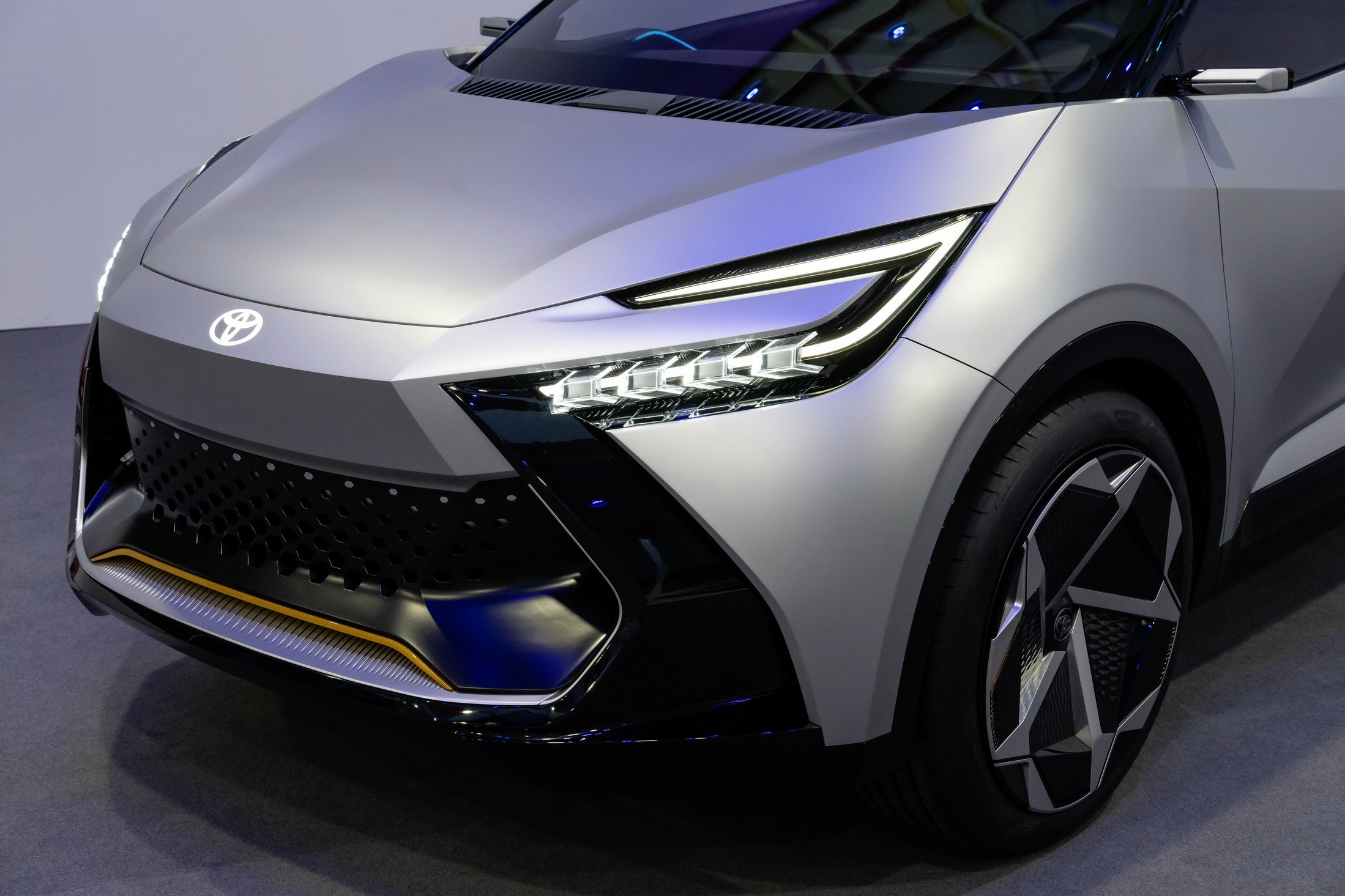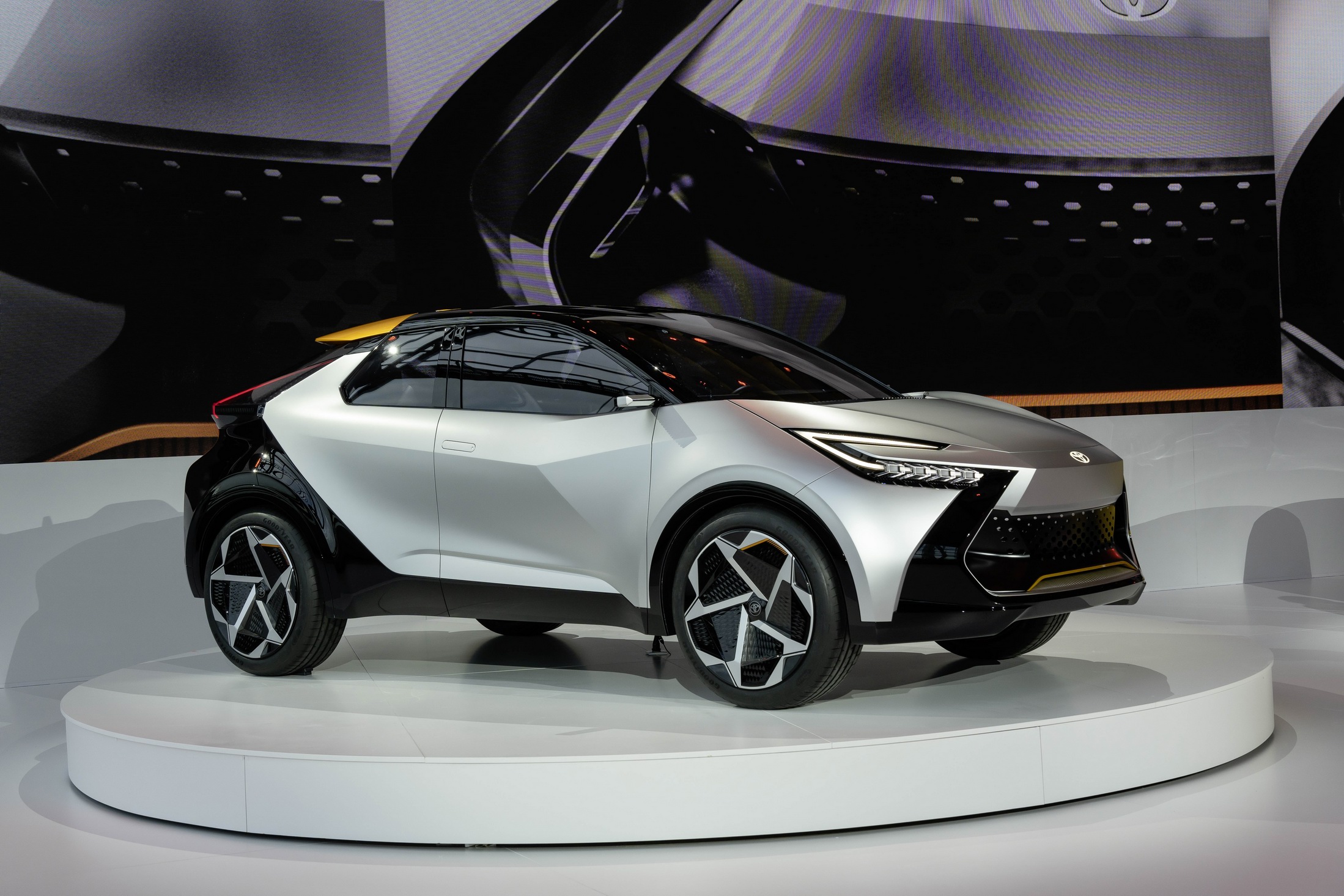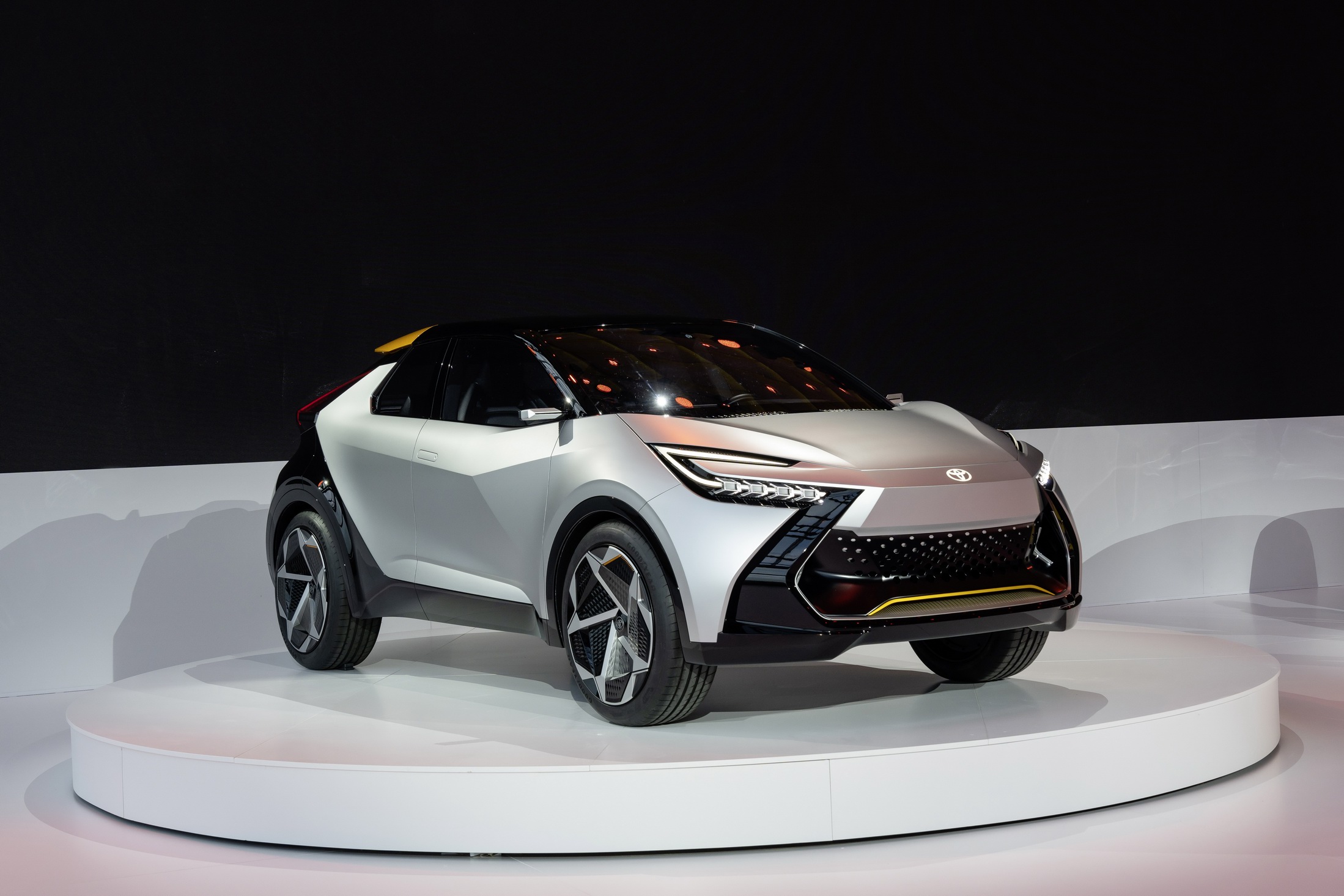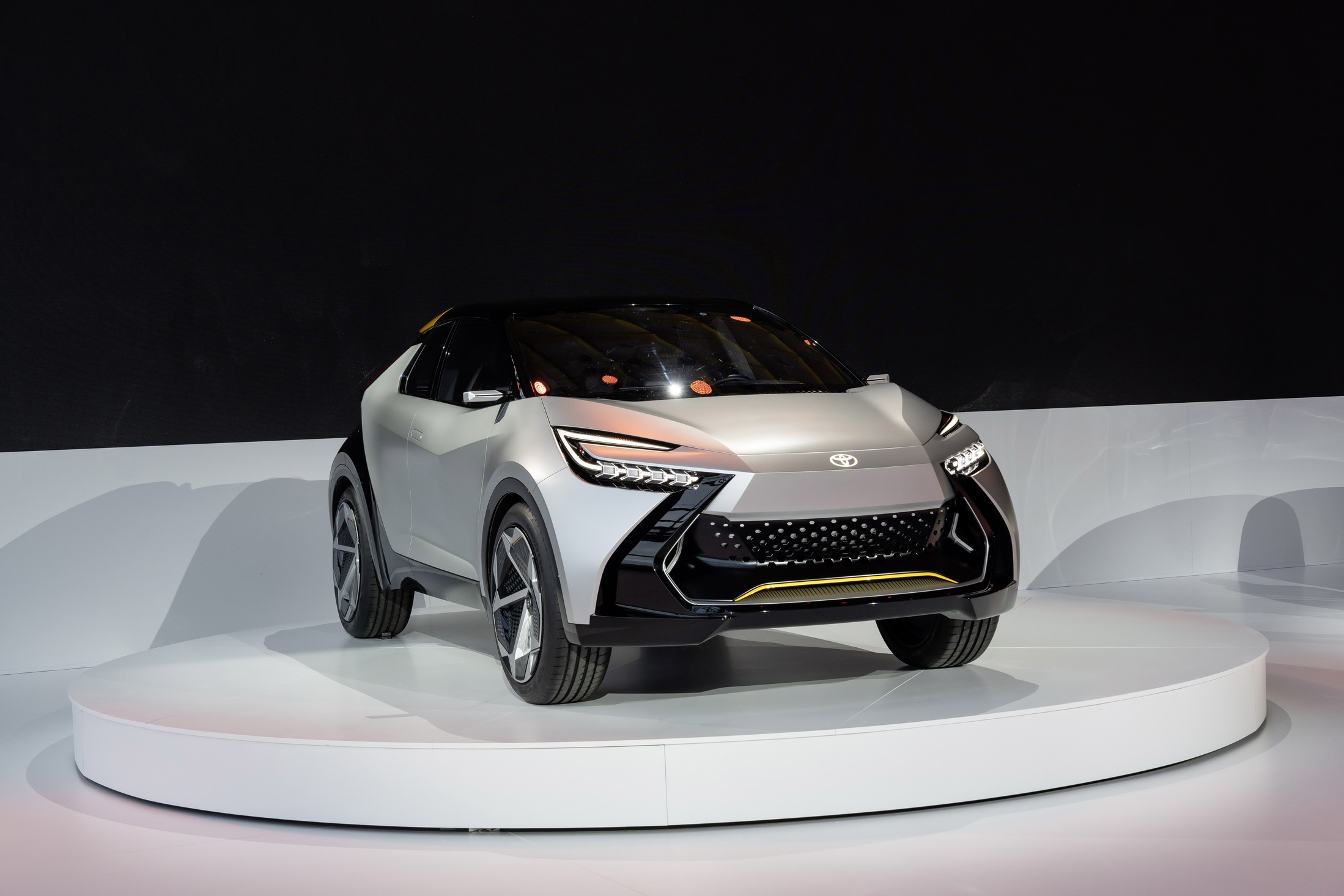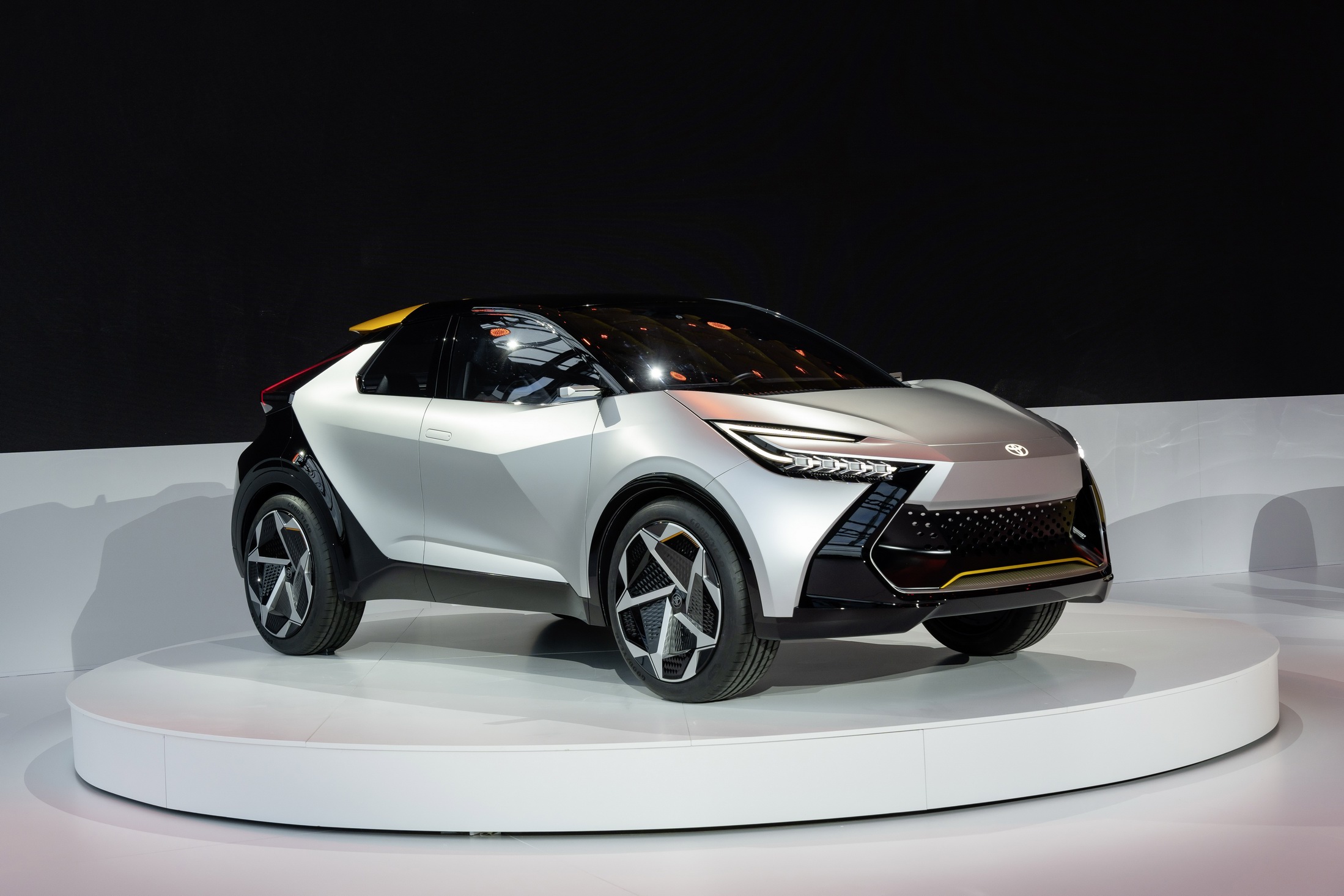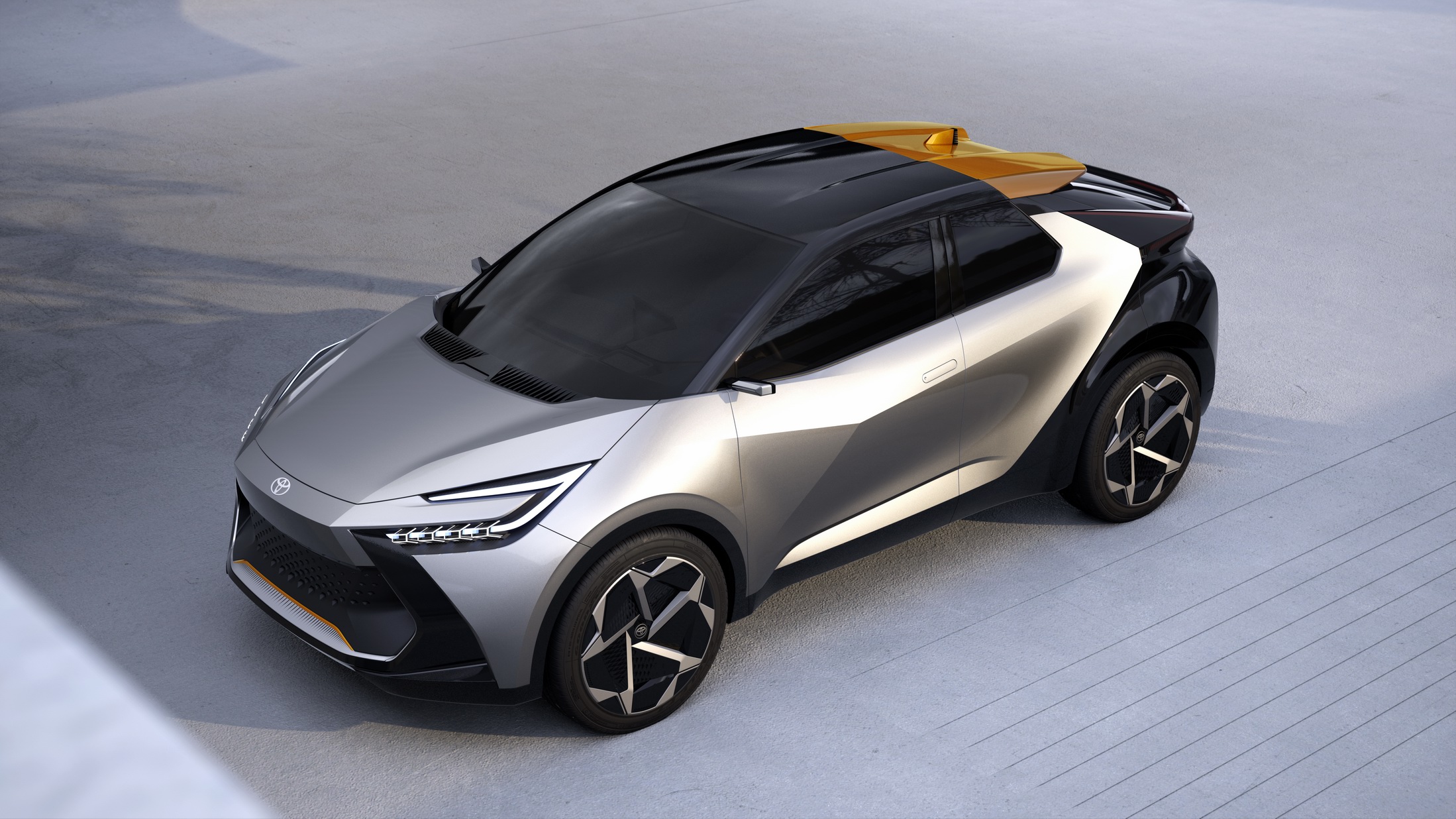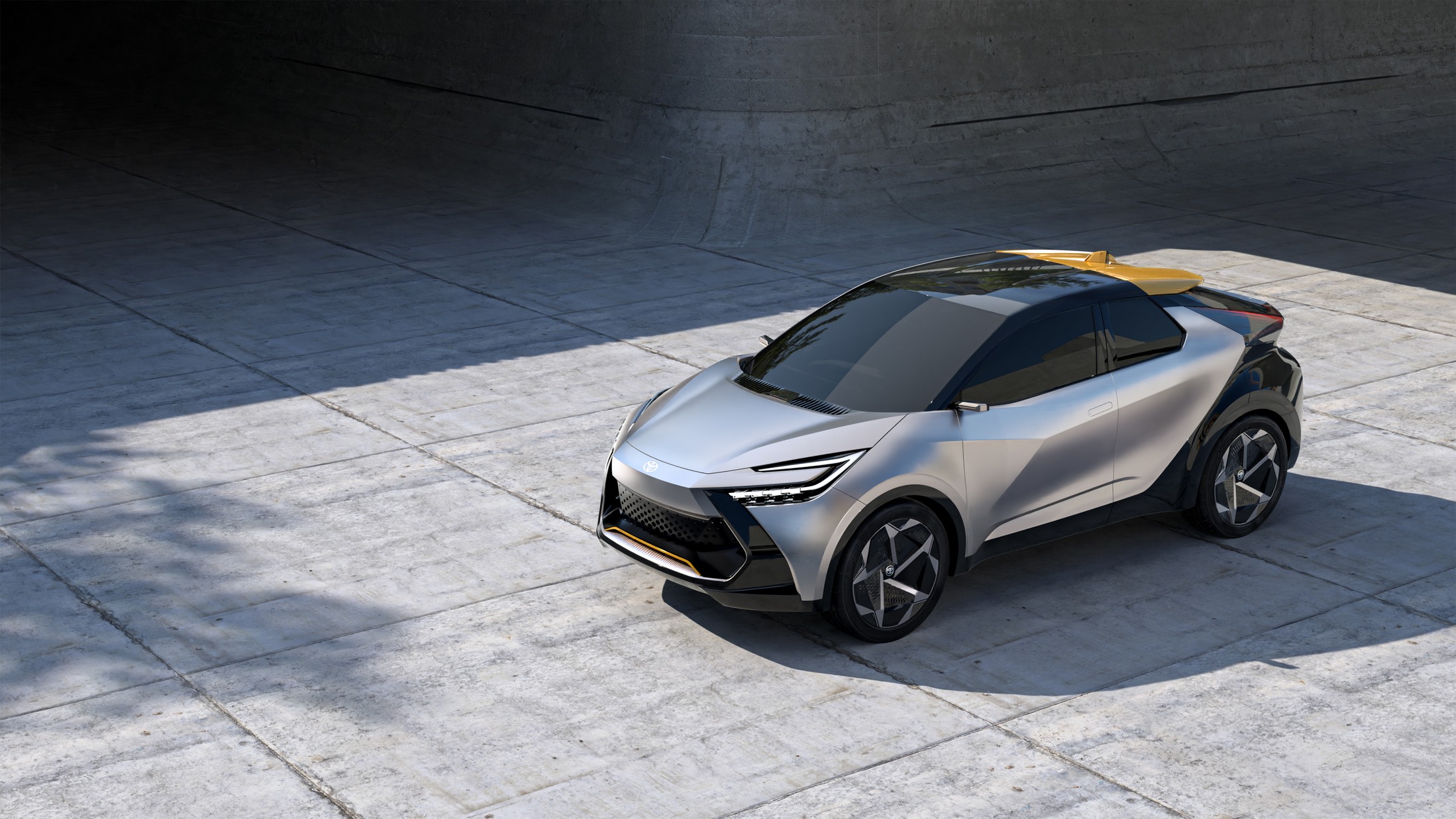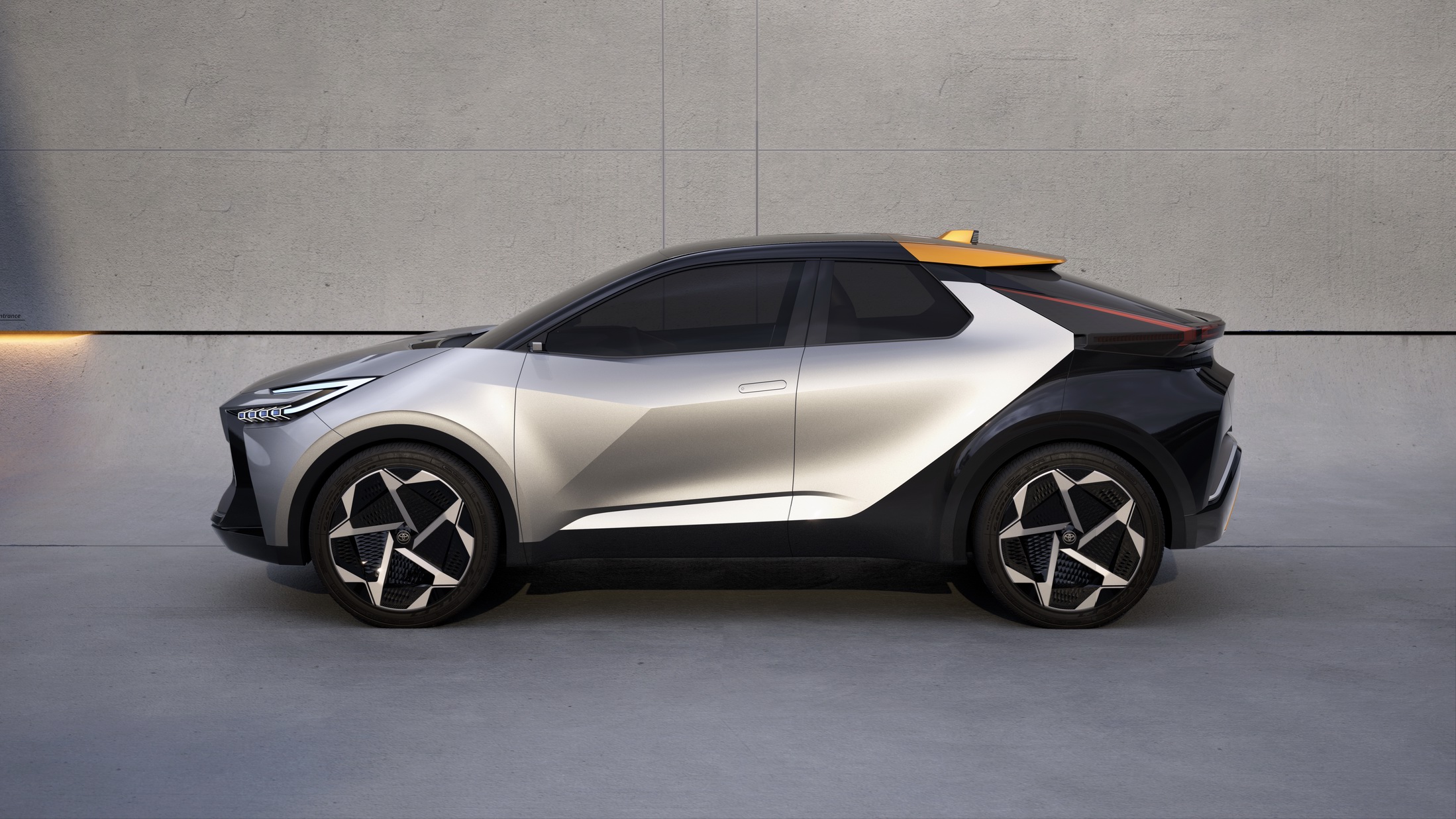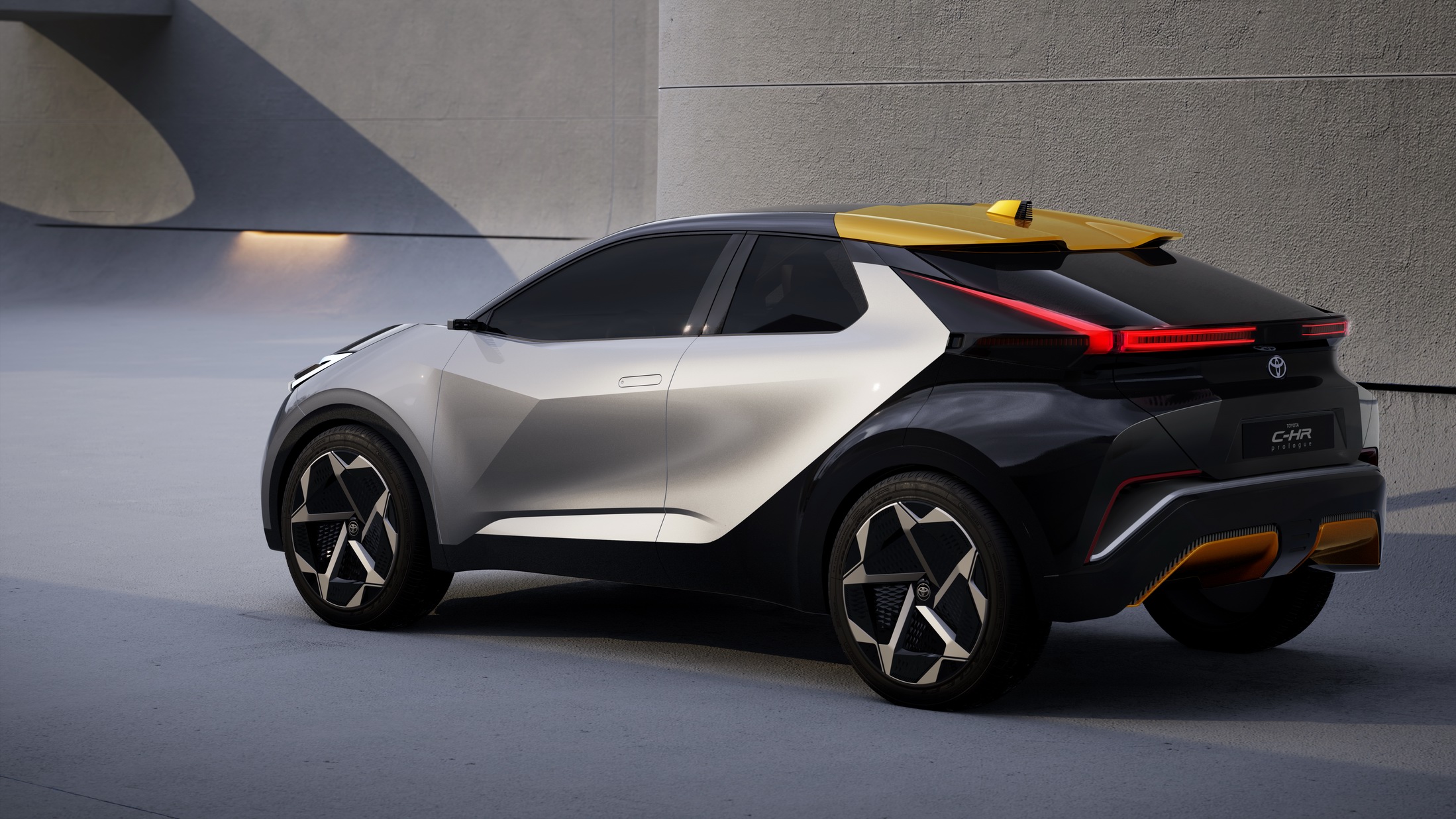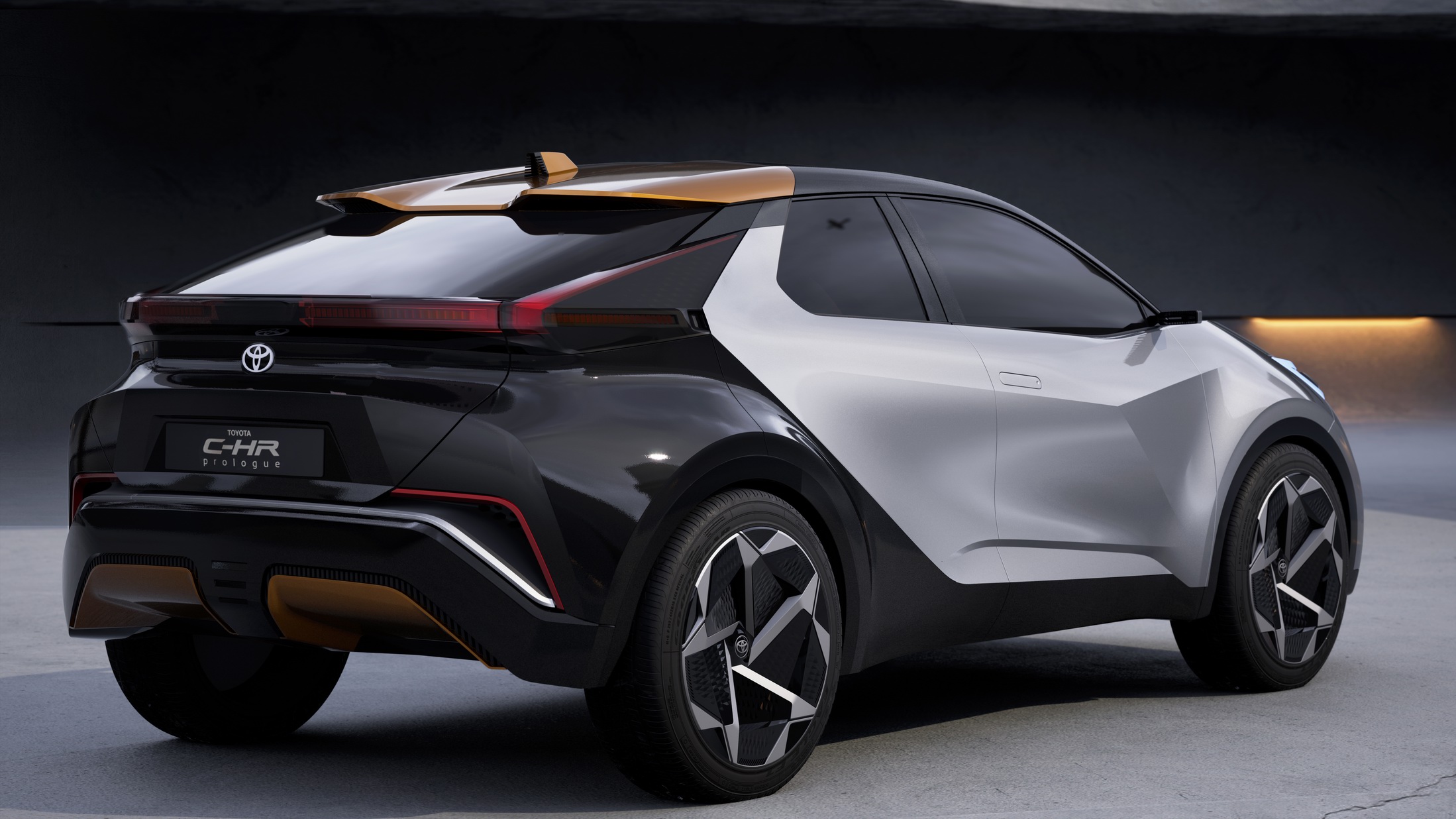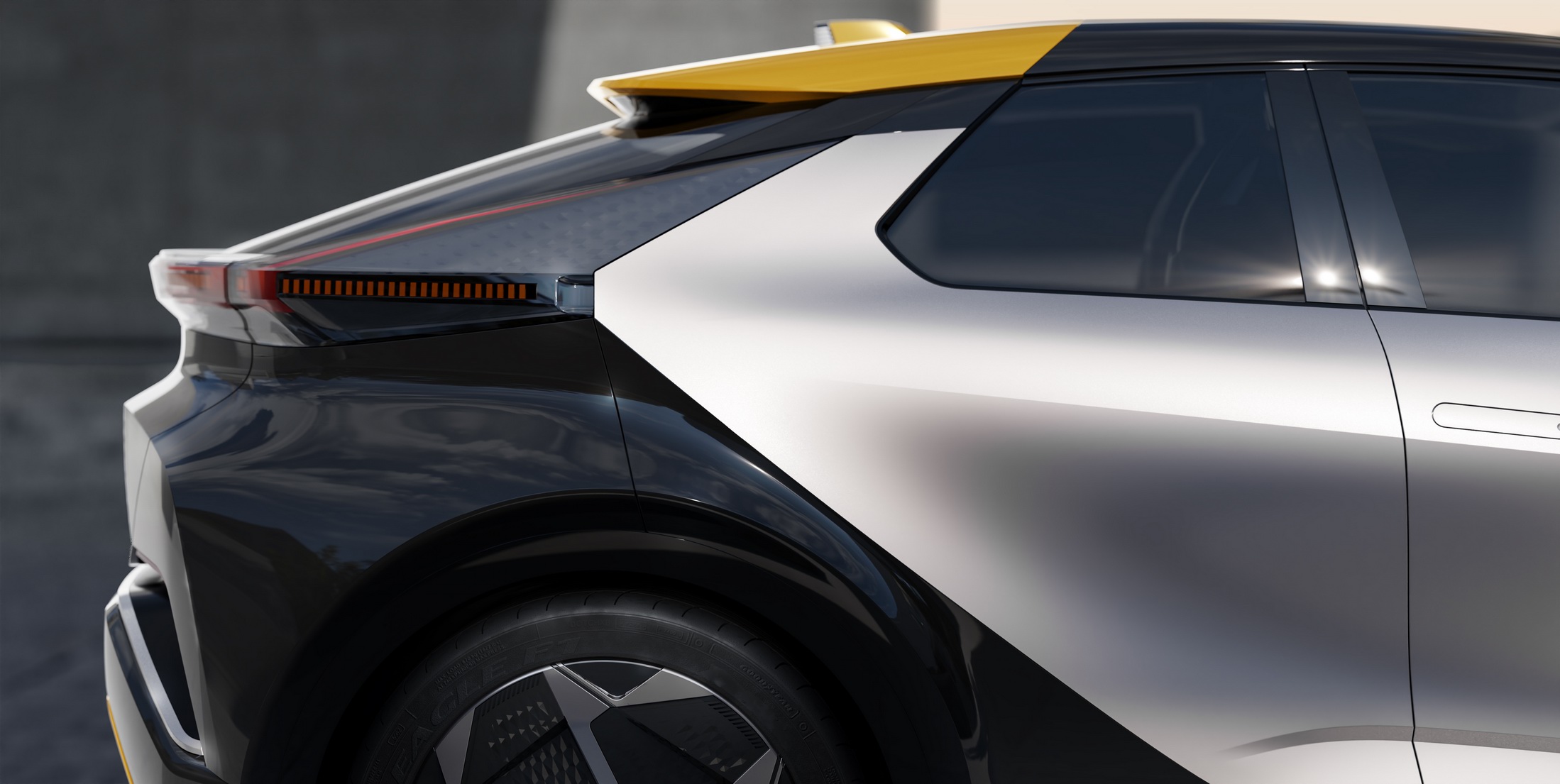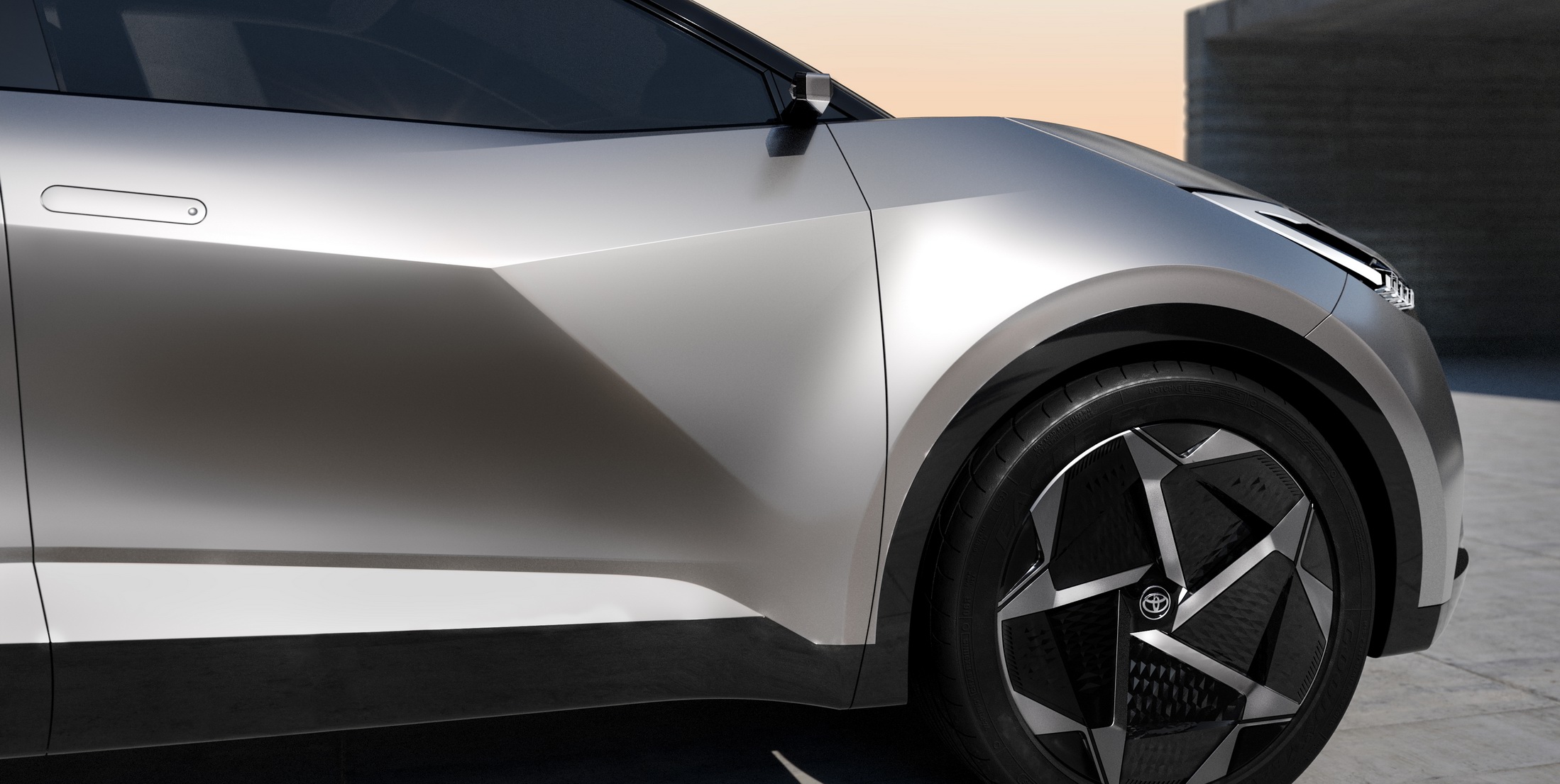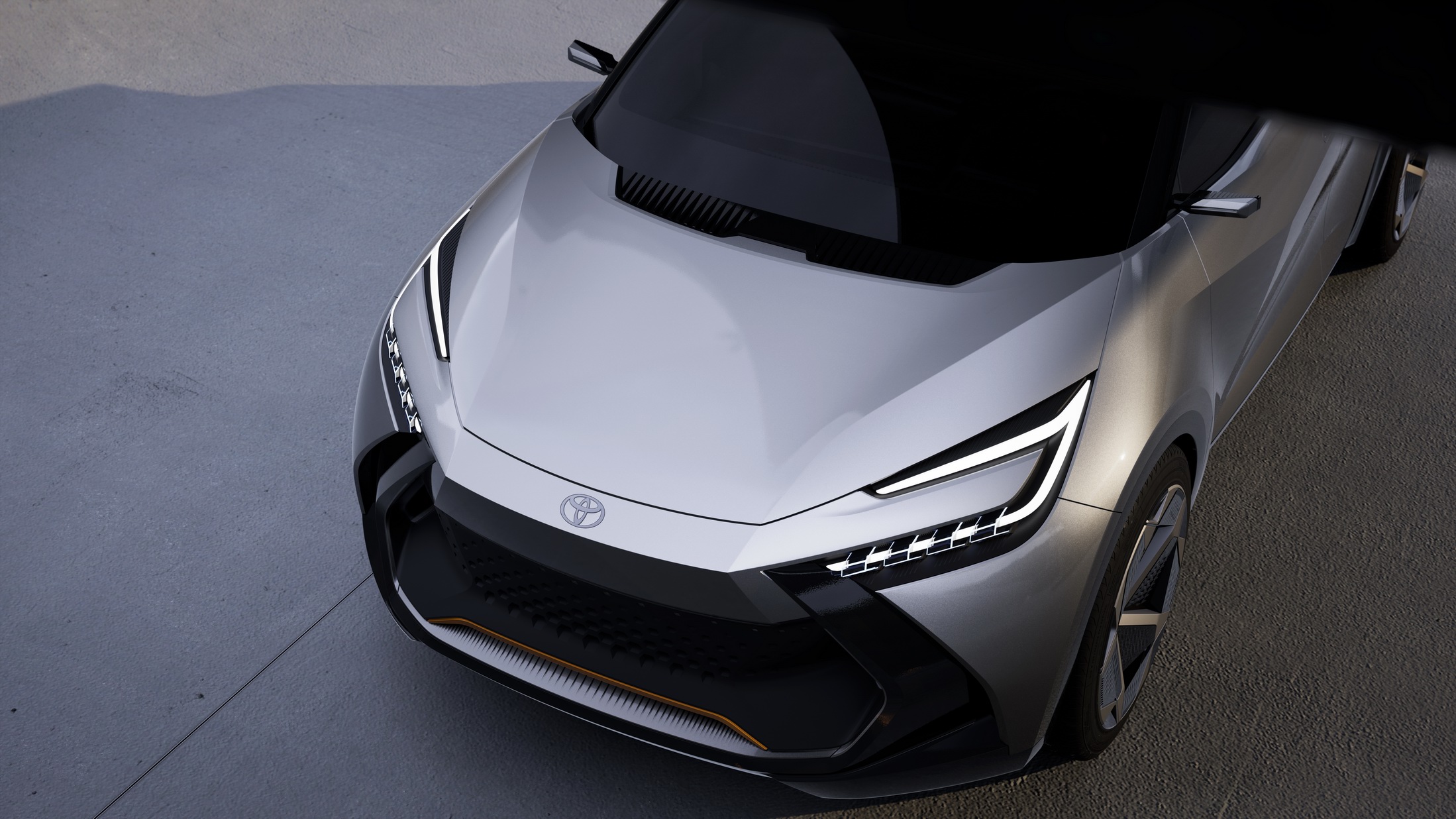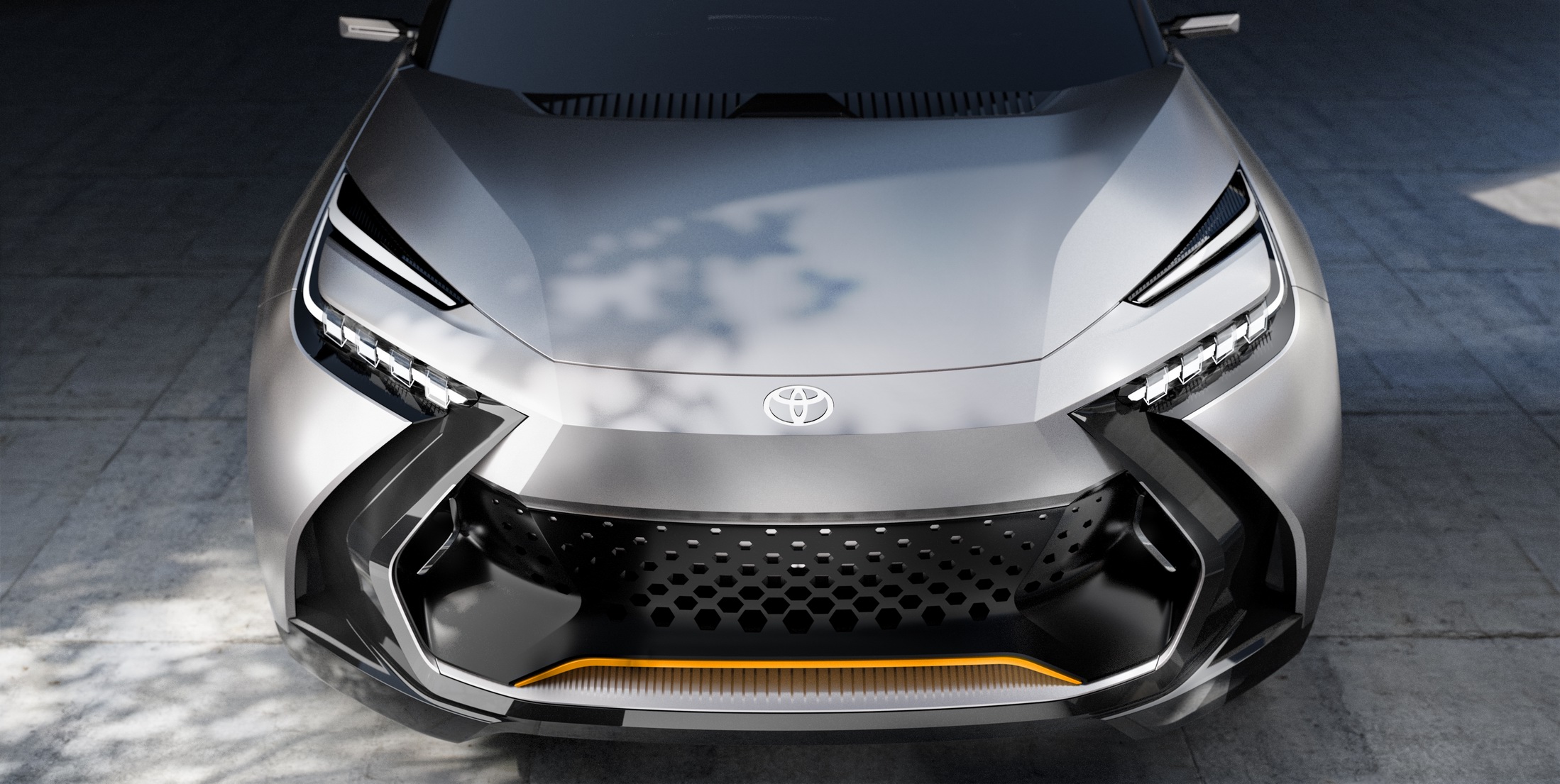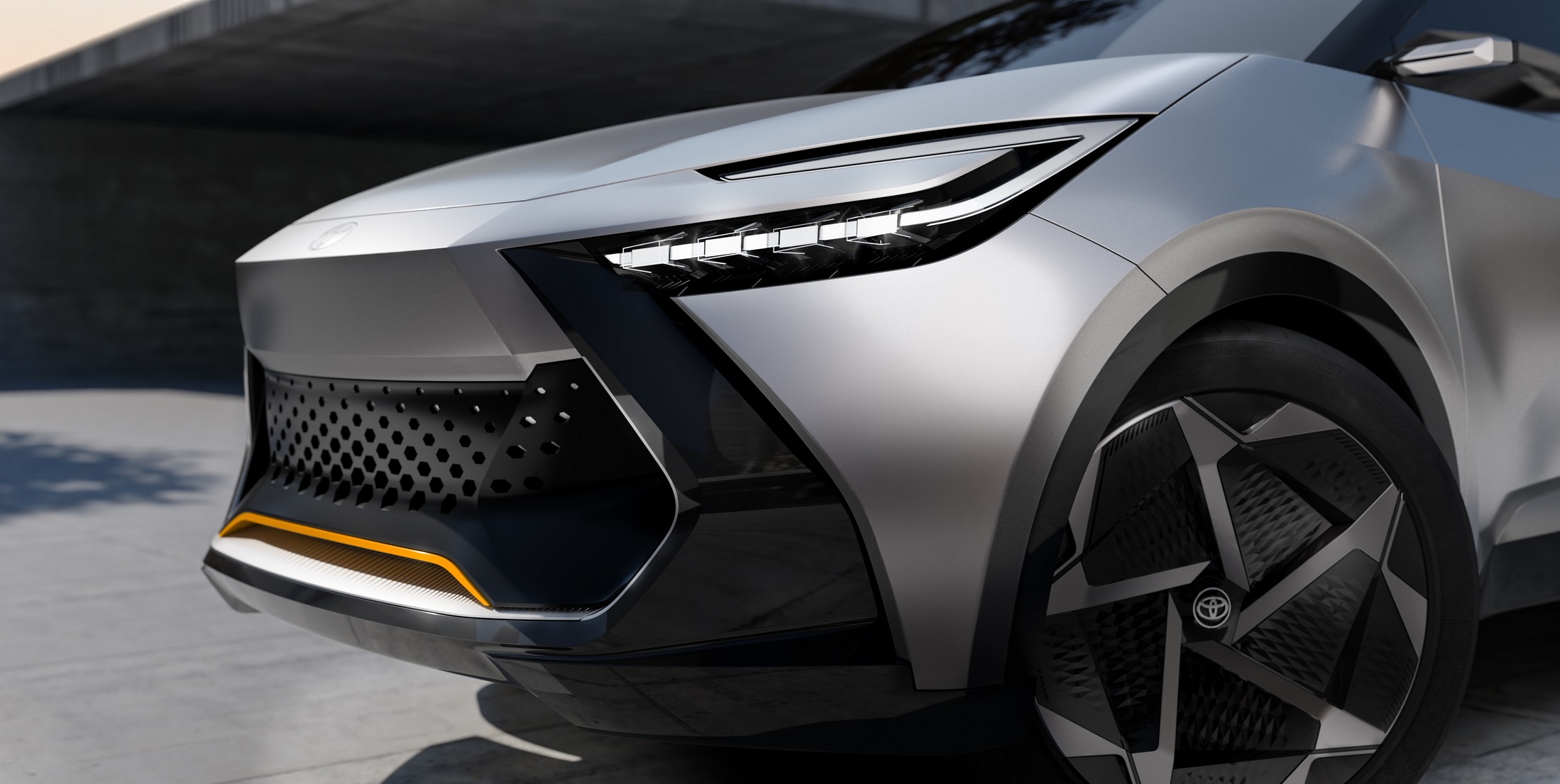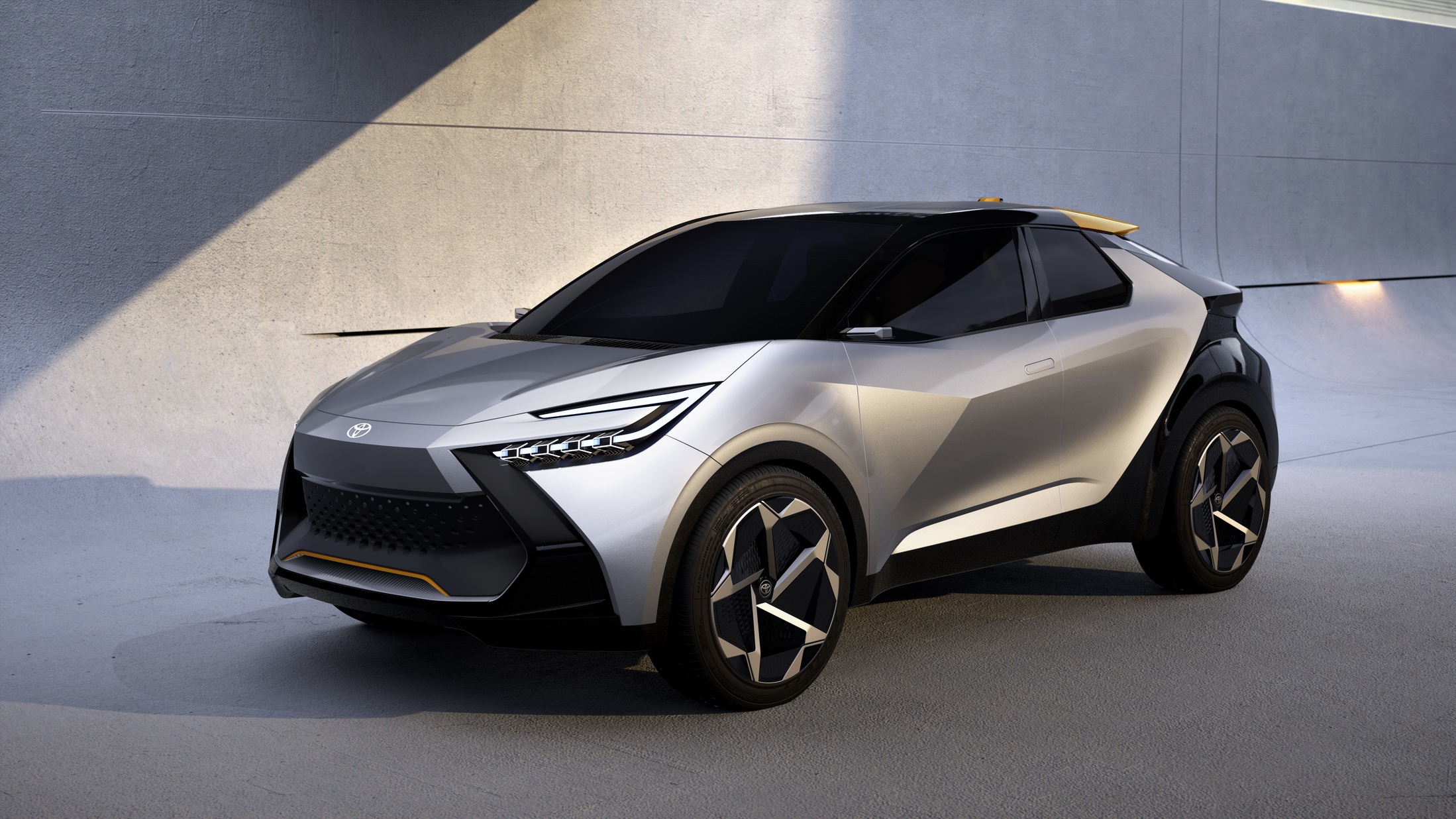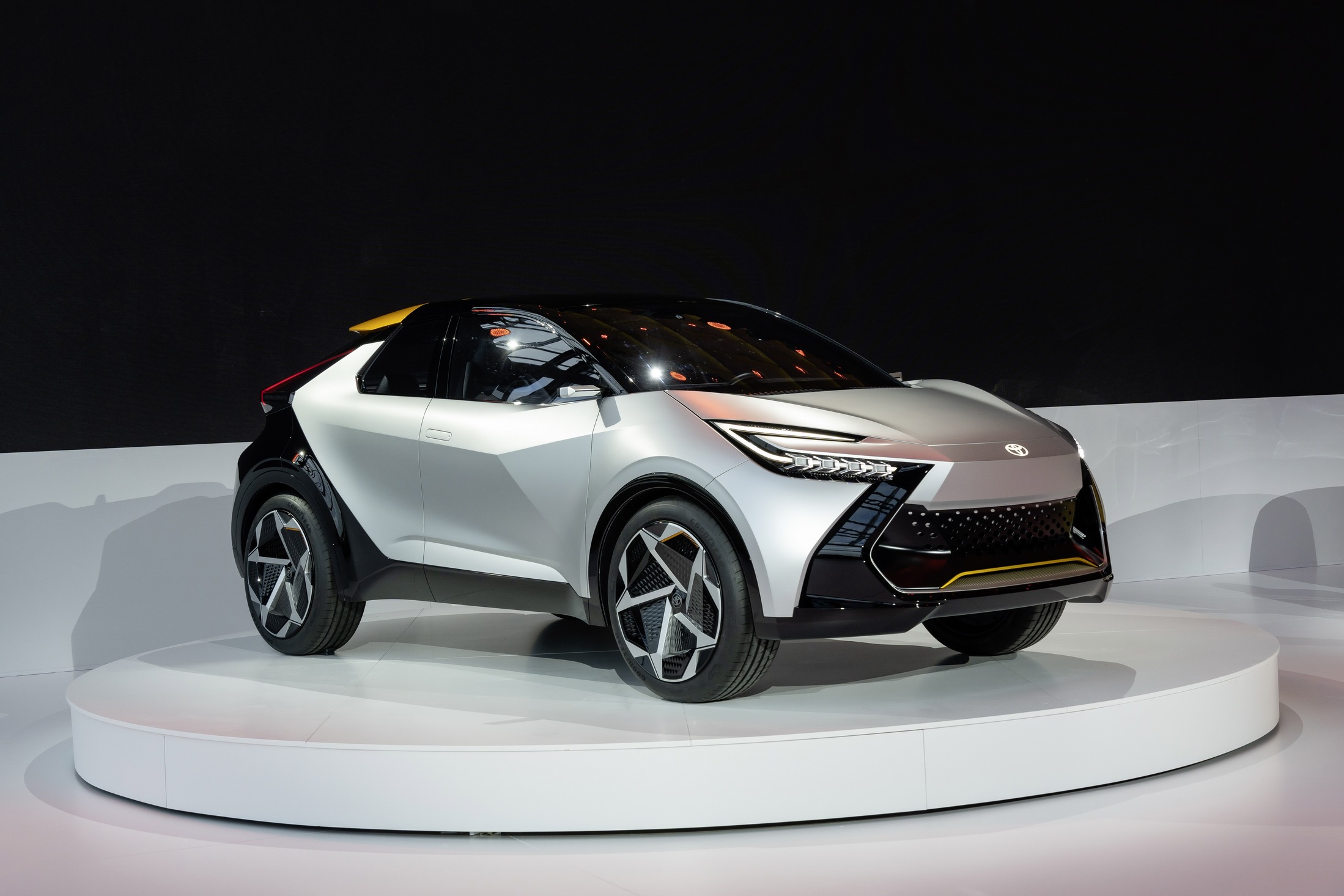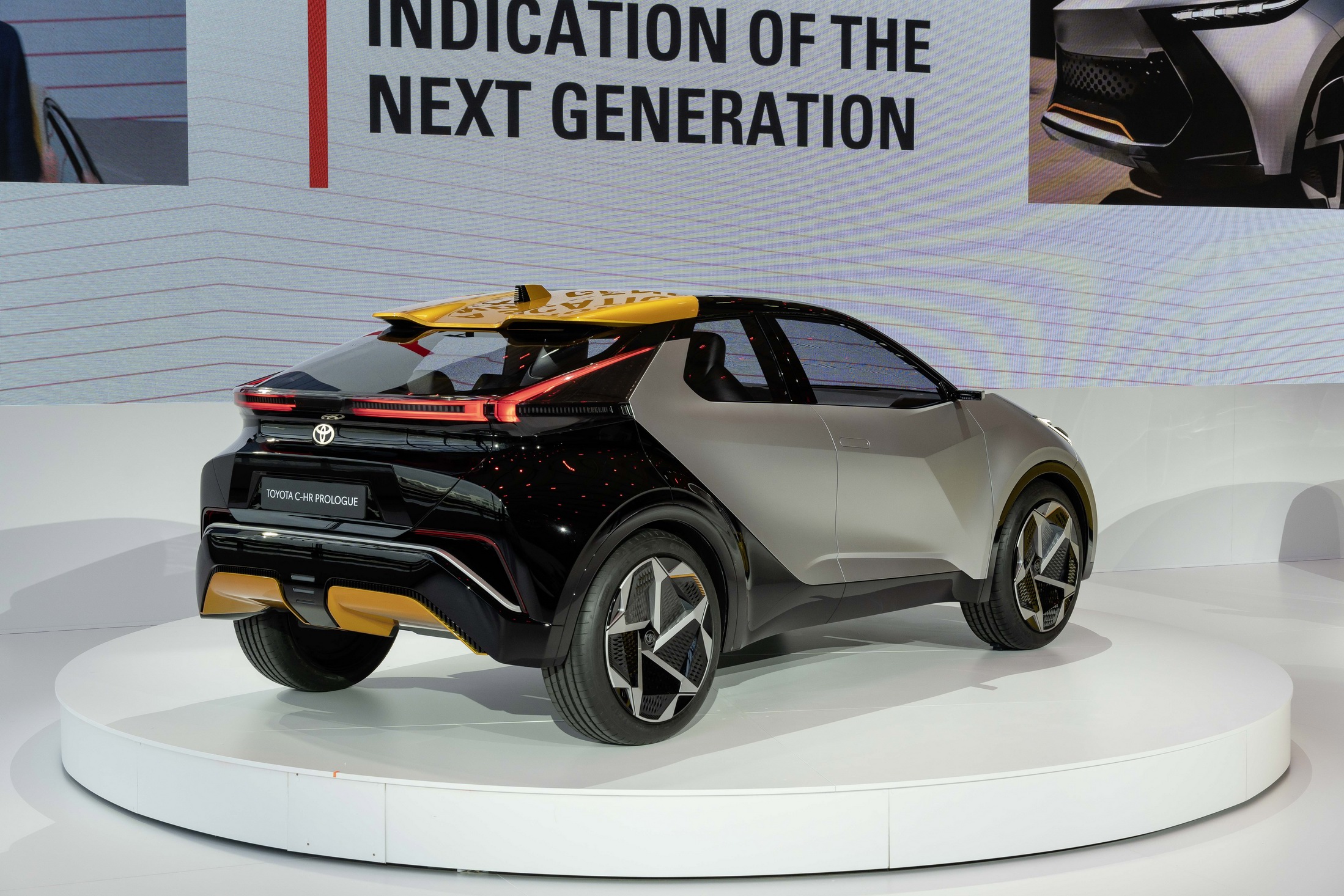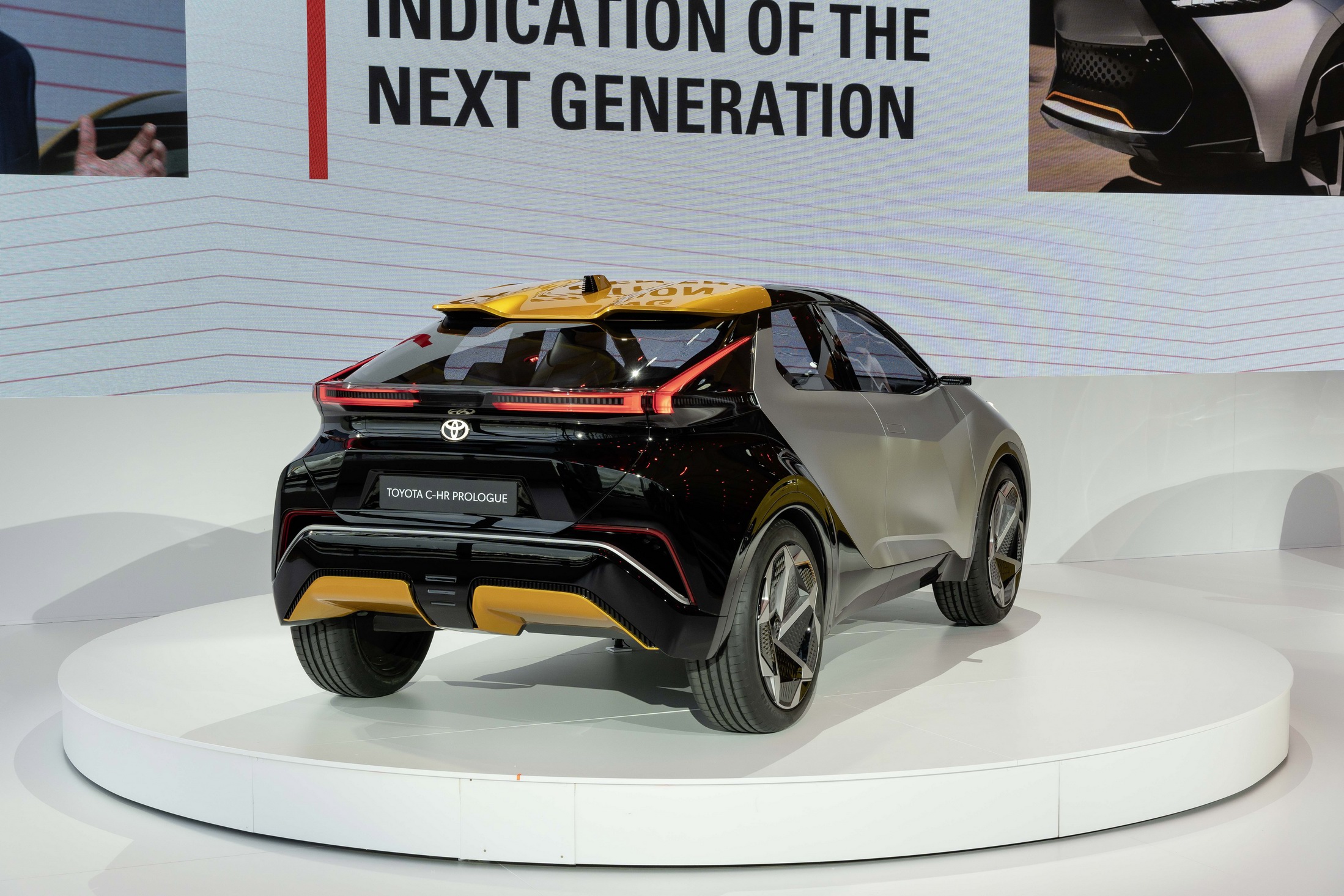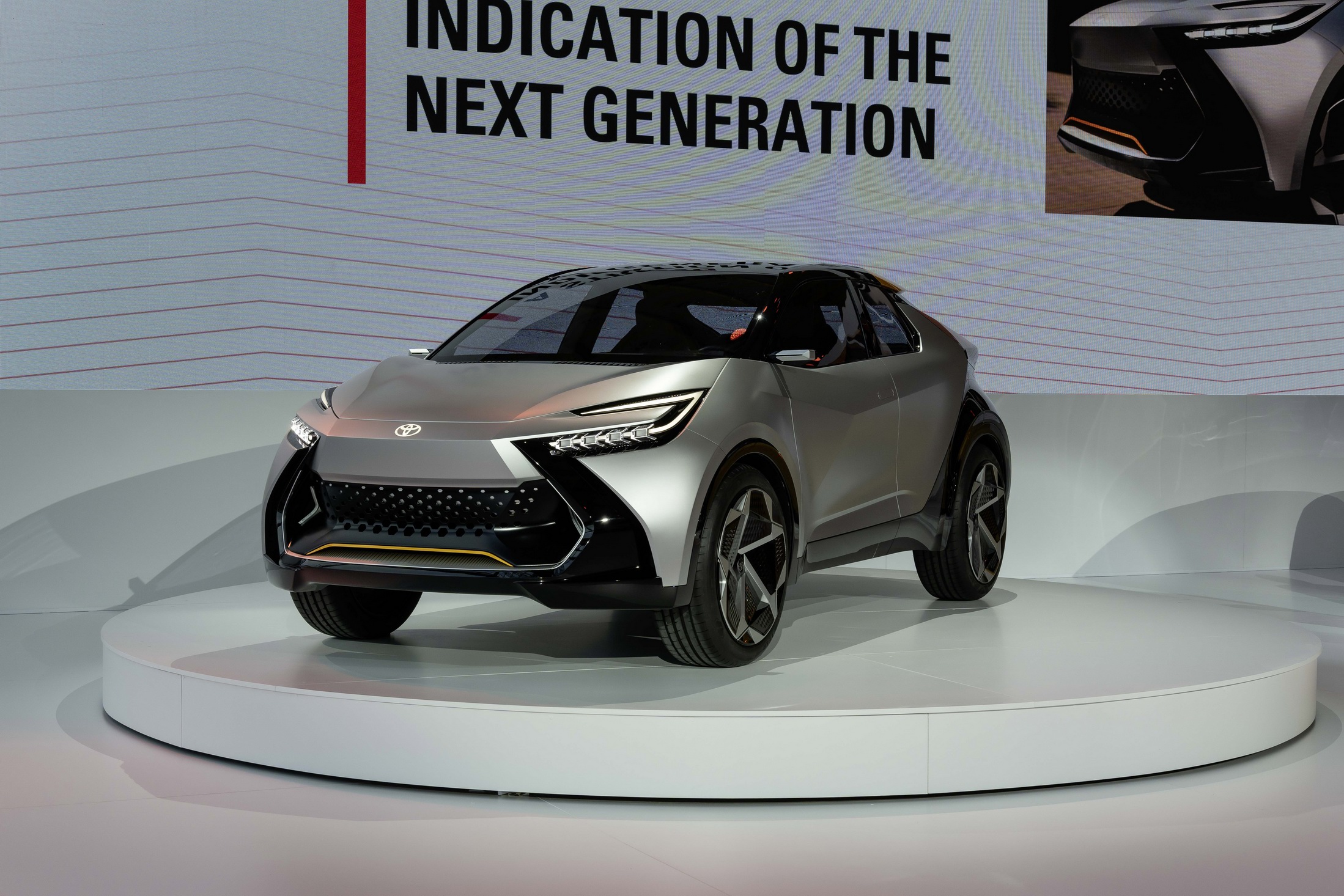Toyota unveiled the C-HR Prologue concept, previewing the production version of the second generation C-HR that is scheduled to debut in 2023. The compact SUV features evolutionary styling and will be available with hybrid and plug-in hybrid powertrains.
The outgoing C-HR was introduced in 2016 and received a facelift in 2019, making 2023 the perfect time for a new generation. The SUV proved to be quite popular among European buyers, which is why Toyota decided to follow the same recipe with its successor in terms of the quicky exterior design and unconventional proportions. Thus, the C-HR Prologue was penned by Toyota’s ED2 studio in South France, just like its predecessor.
Read: Toyota bZ Compact SUV Concept Is An Attractive Preview Of A Future EV
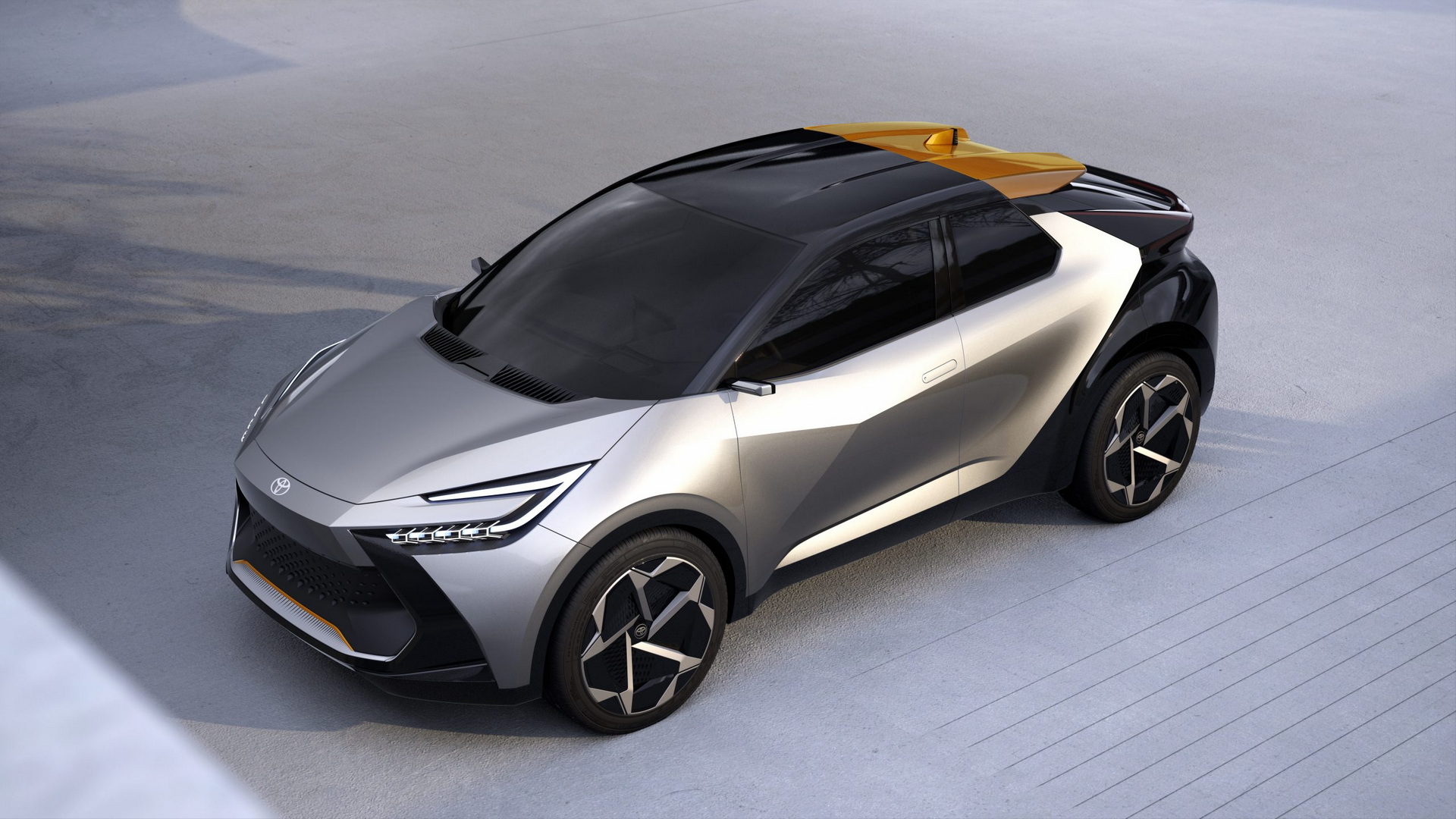
The 2022 Toyota C-HR Prologue (above) is an evolution of the 2021 Toyota Small SU EV Concept (below), bringing the design closer to production. The second-gen C-HR coming in 2023, is expected to look nearly identical to the Prologue.
The C-HR Prologue is actually an evolution of the Small SUV EV concept that was launched in December 2021 alongside many other prototypes. Small changes on the bumpers, roof section, and wheels bring it closer to production, confirming what we saw recently in leaked patent drawings.
The “hammerhead” style nose with full-LED headlights is similar to other Toyota EVs and hybrids, showing that this is the way forward for the Japanese automaker’s design language. The front bumper has black elements surrounding the large intake that is mostly covered for better aerodynamics. The profile is heavily sculpted with small windows reminiscent of the outgoing C-HR. The triangular shape towards the front fenders is new, while there is more emphasis on the rear quarter panels and the C-pillars.
The larger-diameter wheels, the shorter overhangs, and the heavily inclined rear windshield make the SUV look sportier and more compact compared to its predecessor. Furthermore, Toyota designers opted for a tri-tone treatment, combining a metal silver shade for the bodywork with recycled carbon black for the rear section, and “sulfur” accents on the bumpers and the rear spoiler. The production version is expected to retain most of the exterior design of the concept, although some features like the flush door handles and the mirror-replacing cameras could be replaced in favor of lower production costs.
Toyota didn’t show photos or renderings of the interior, but claims it is “more spacious and practical” than before. It is also safe to assume that the new C-HR will have more technology with larger screens for the digital cockpit, although the black-tinted windows of the concept do not allow us a look inside.
The company was coy on details about the platform and the powertrains, although it confirmed that the new C-HR will be available in hybrid and plug-in hybrid forms. This means it will be Toyota’s third PHEV offering in Europe, after the RAV4 and the Prius. We suspect that the SUV will be based on an evolution of the TNGA-C architecture that is already underpinning the slightly larger Corolla Cross and the new Prius. The self-charging hybrid setup could be sourced from the former, and the PHEV from the latter, although power outputs and range figures could be different in the smaller C-HR. It is not clear if Toyota will also make a fully electric C-HR like the one that is currently produced in China based on the outgoing model.
Production of the new Toyota C-HR will take place in Turkey, as with the current generation. The battery packs will be assembled in a yet-unnamed facility in Europe using imported battery cells. We expect to learn more about the new C-HR as we move closer to its market launch which is confirmed for 2023. The model will remain in the C-SUV segment, slotting between the smaller Yaris Cross and the slightly larger Corolla Cross in Toyota’s SUV range.




